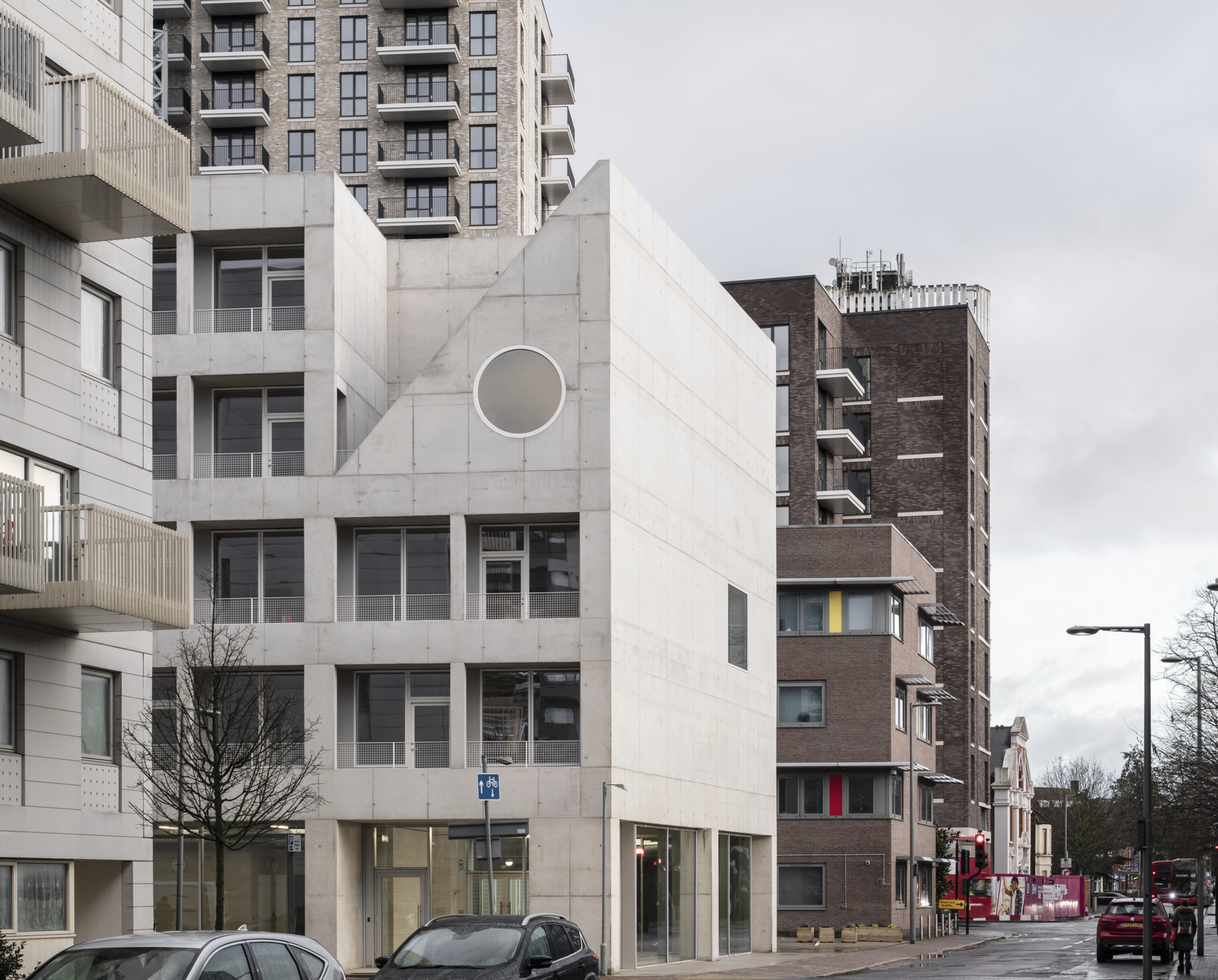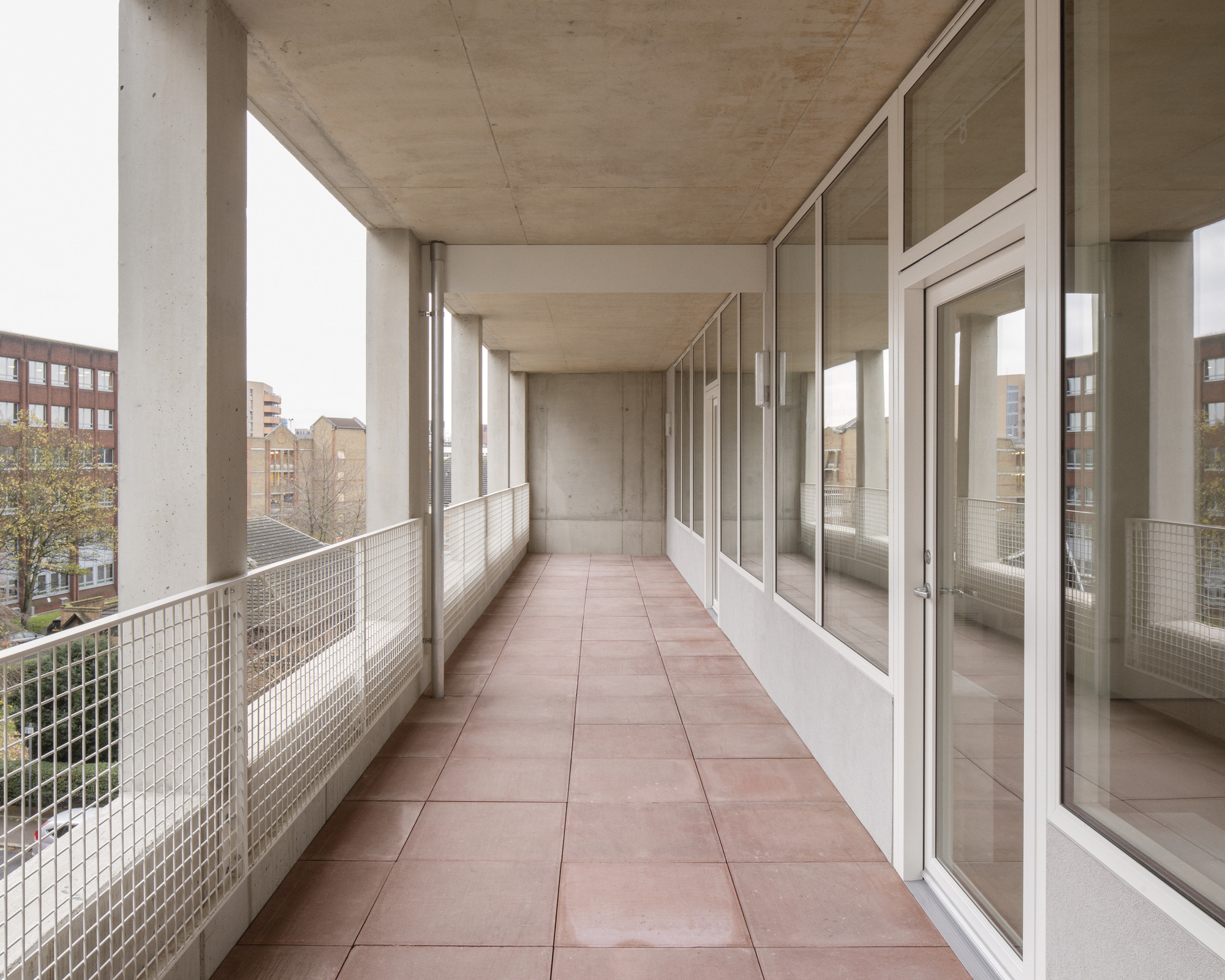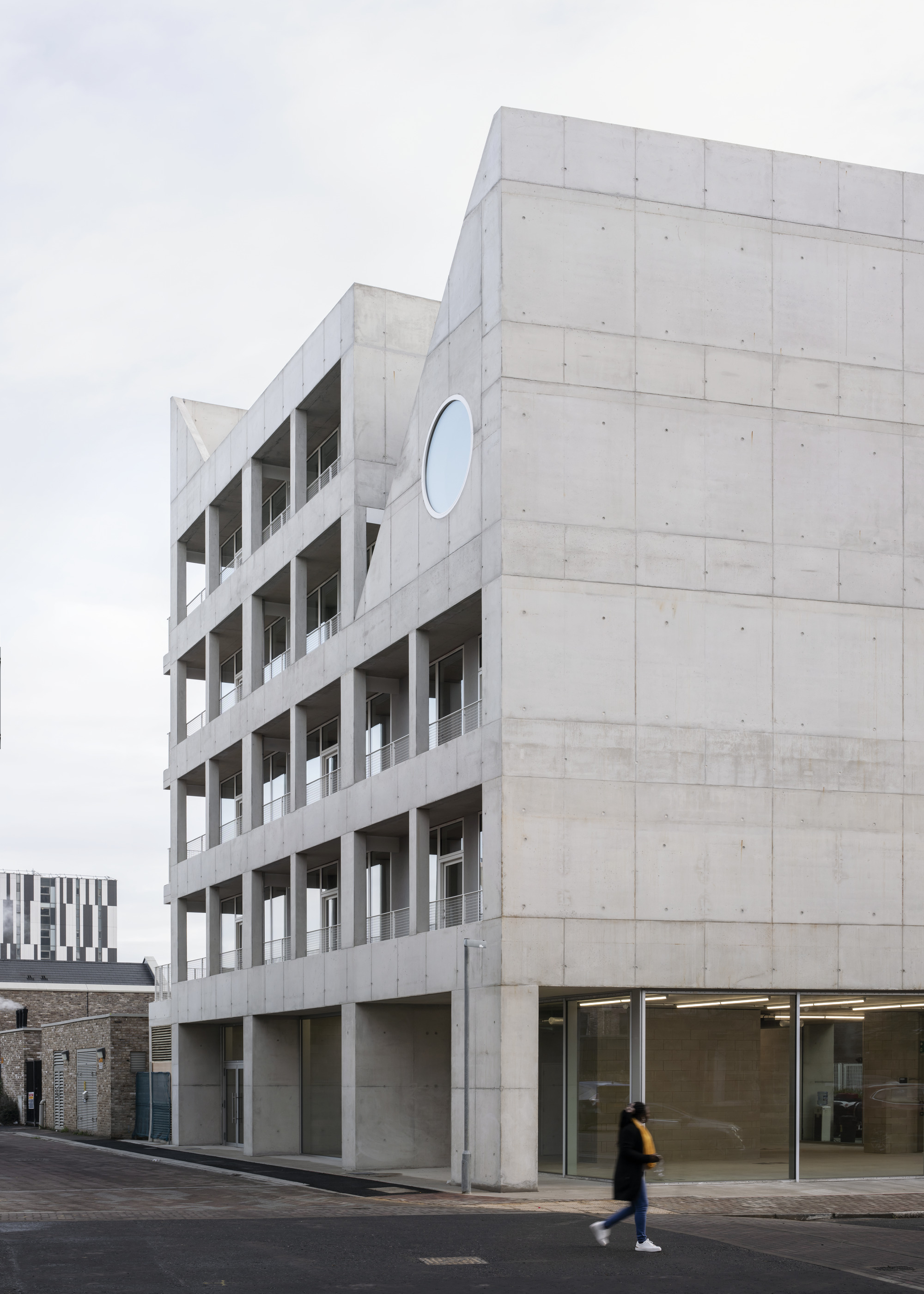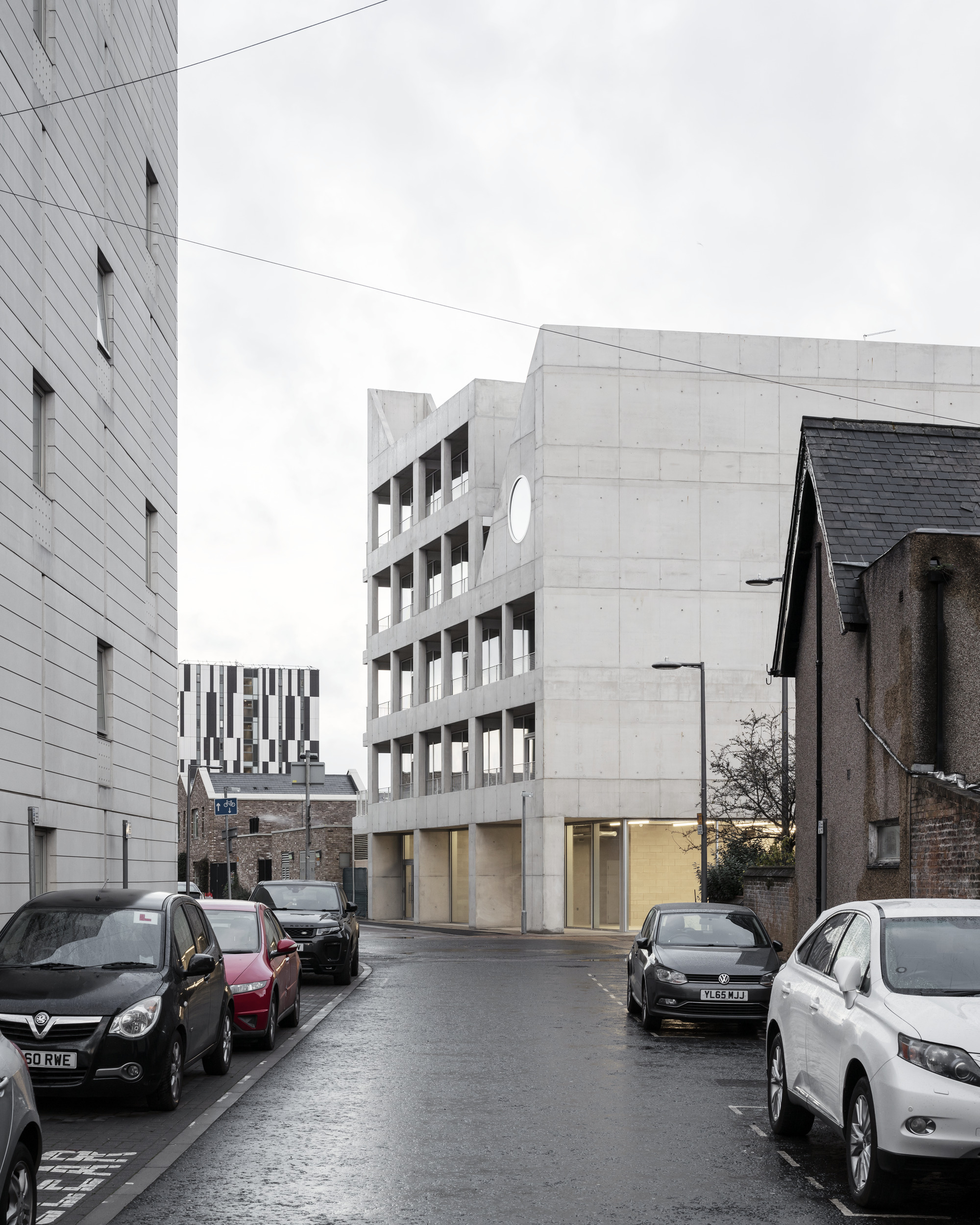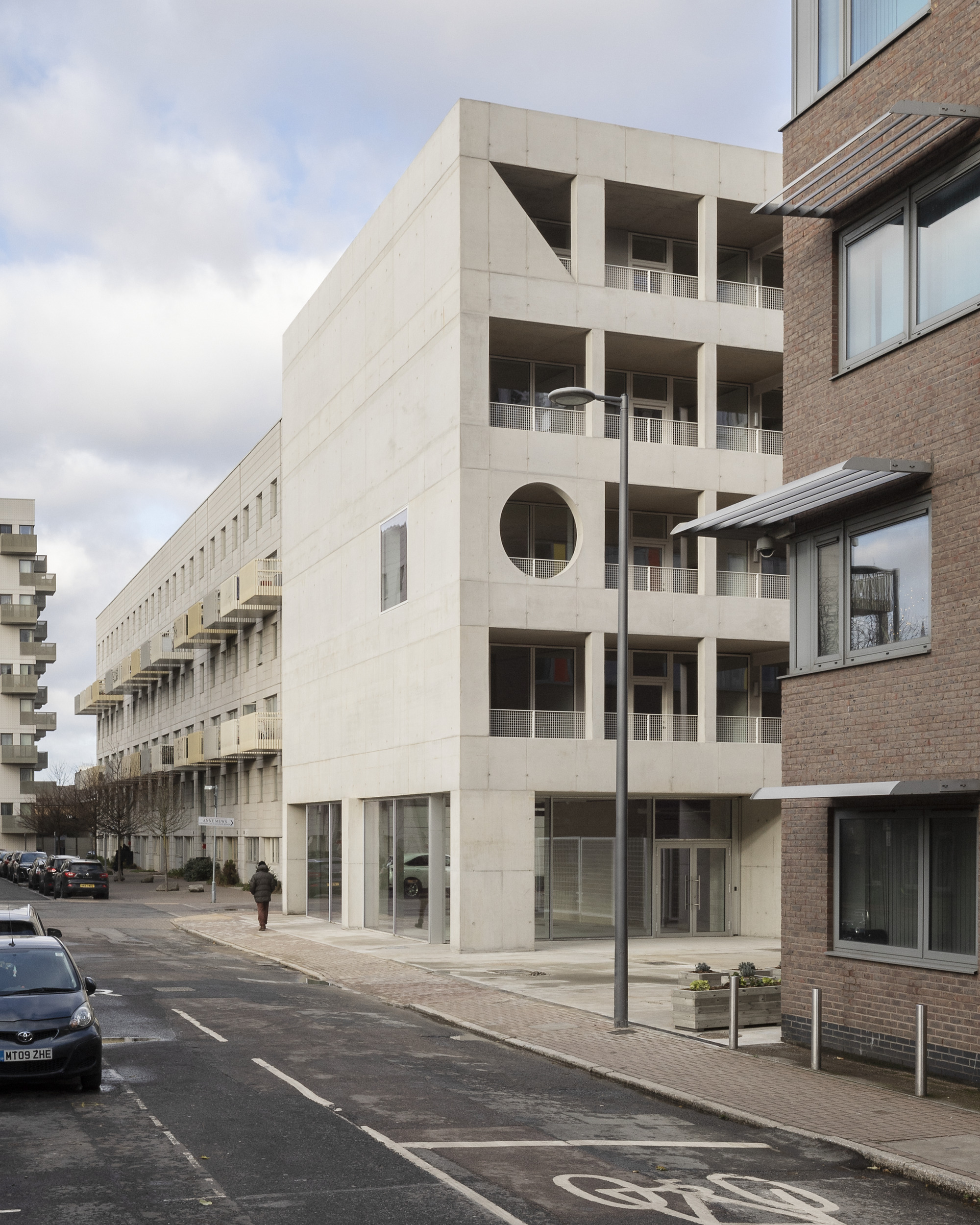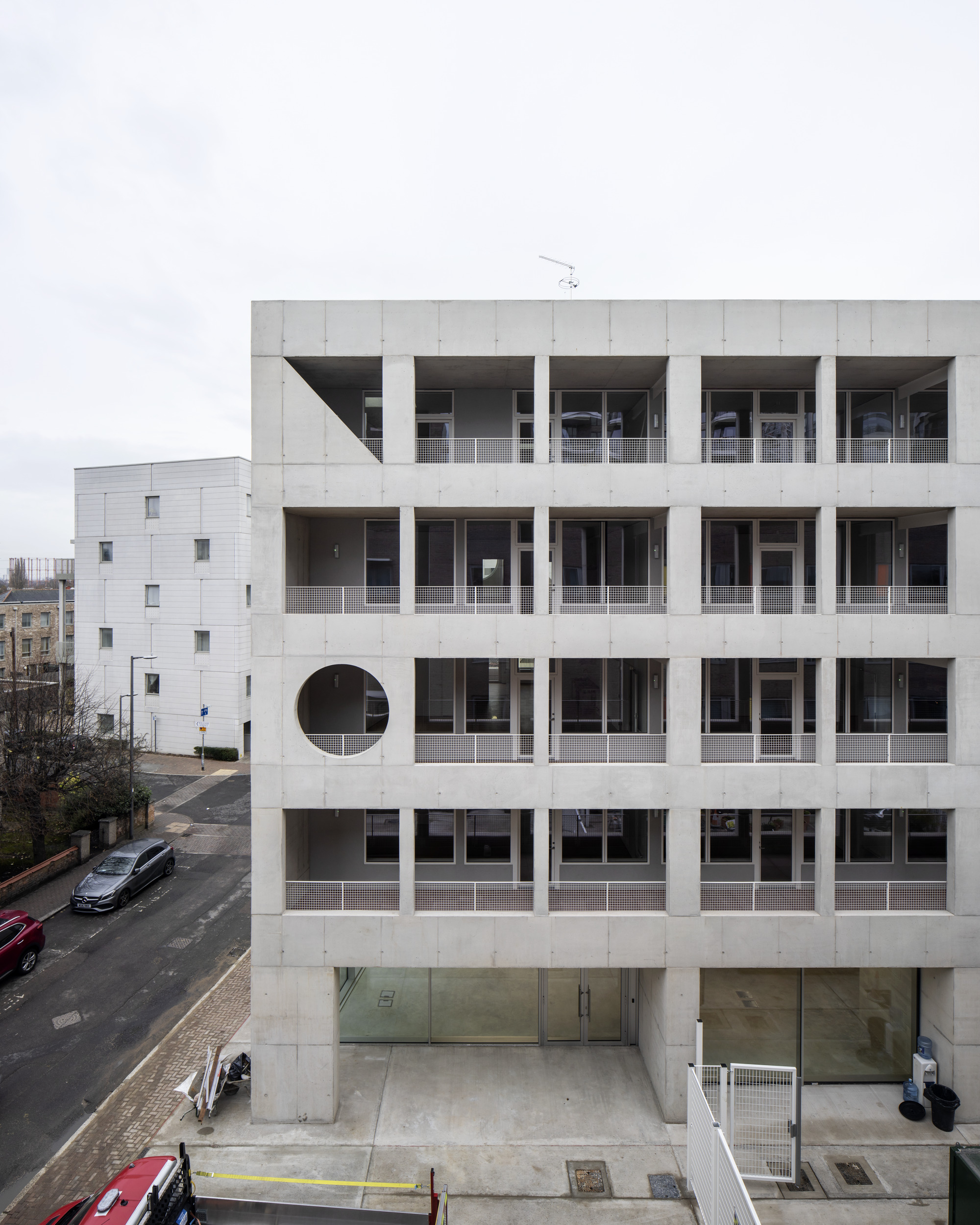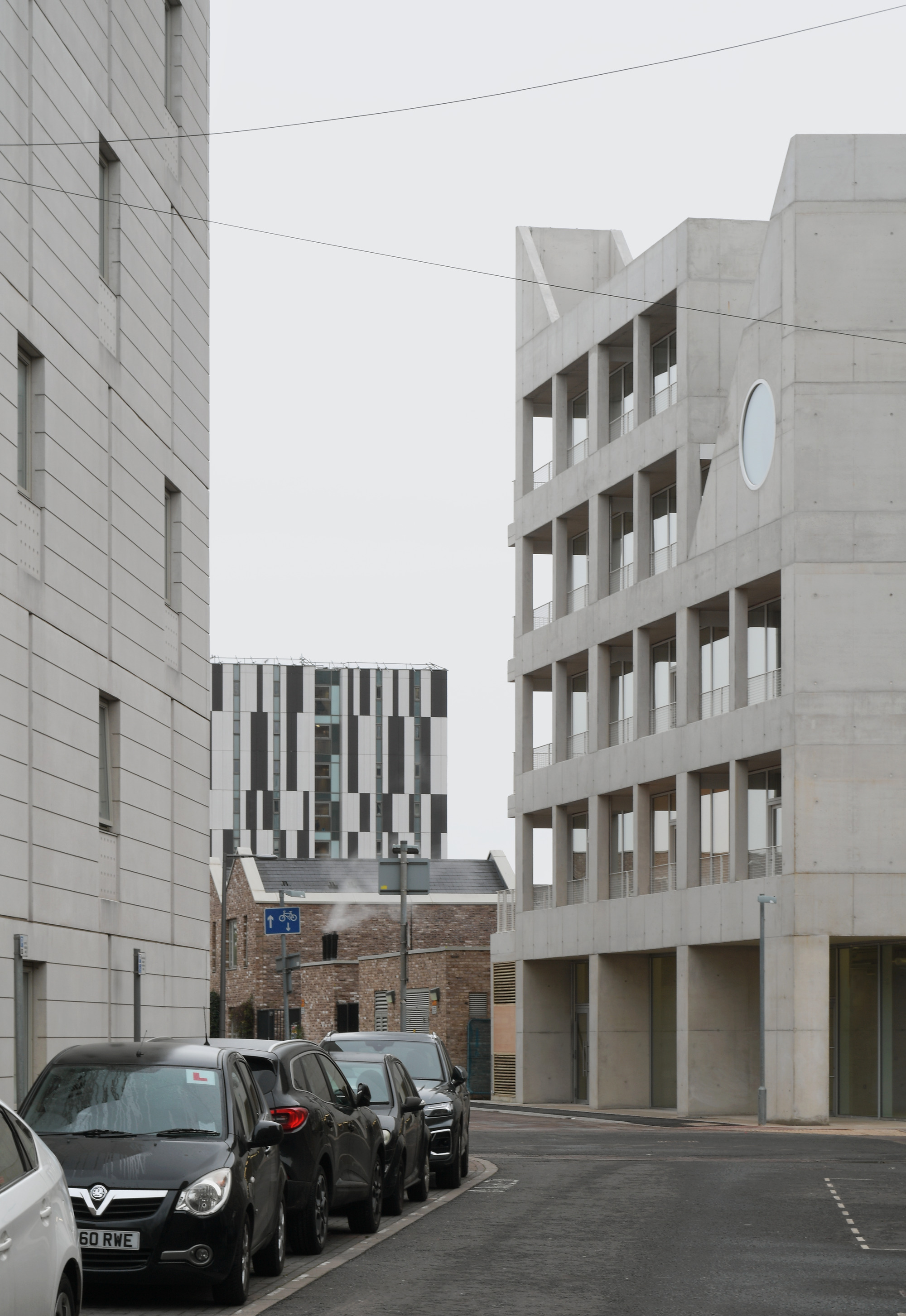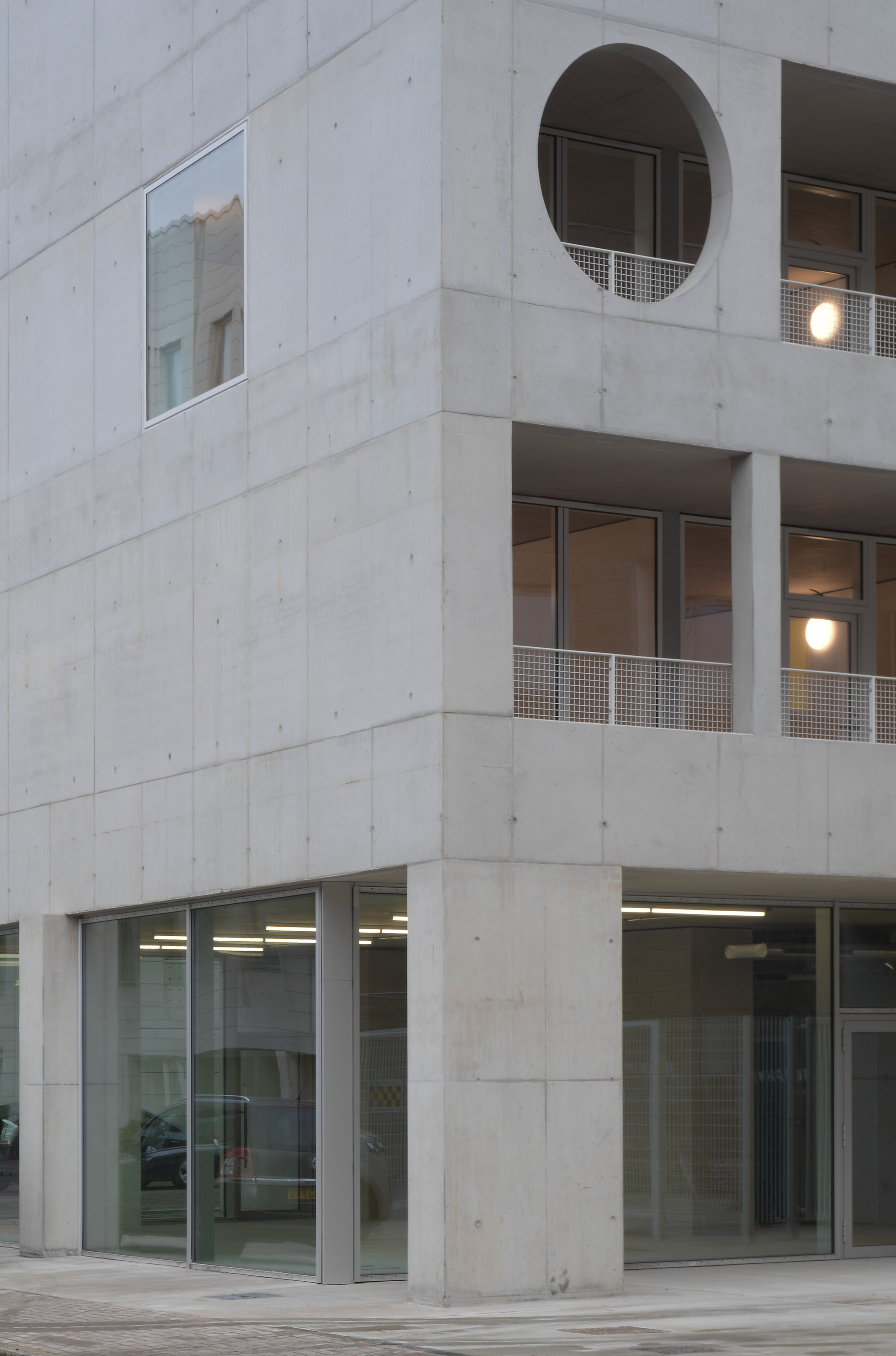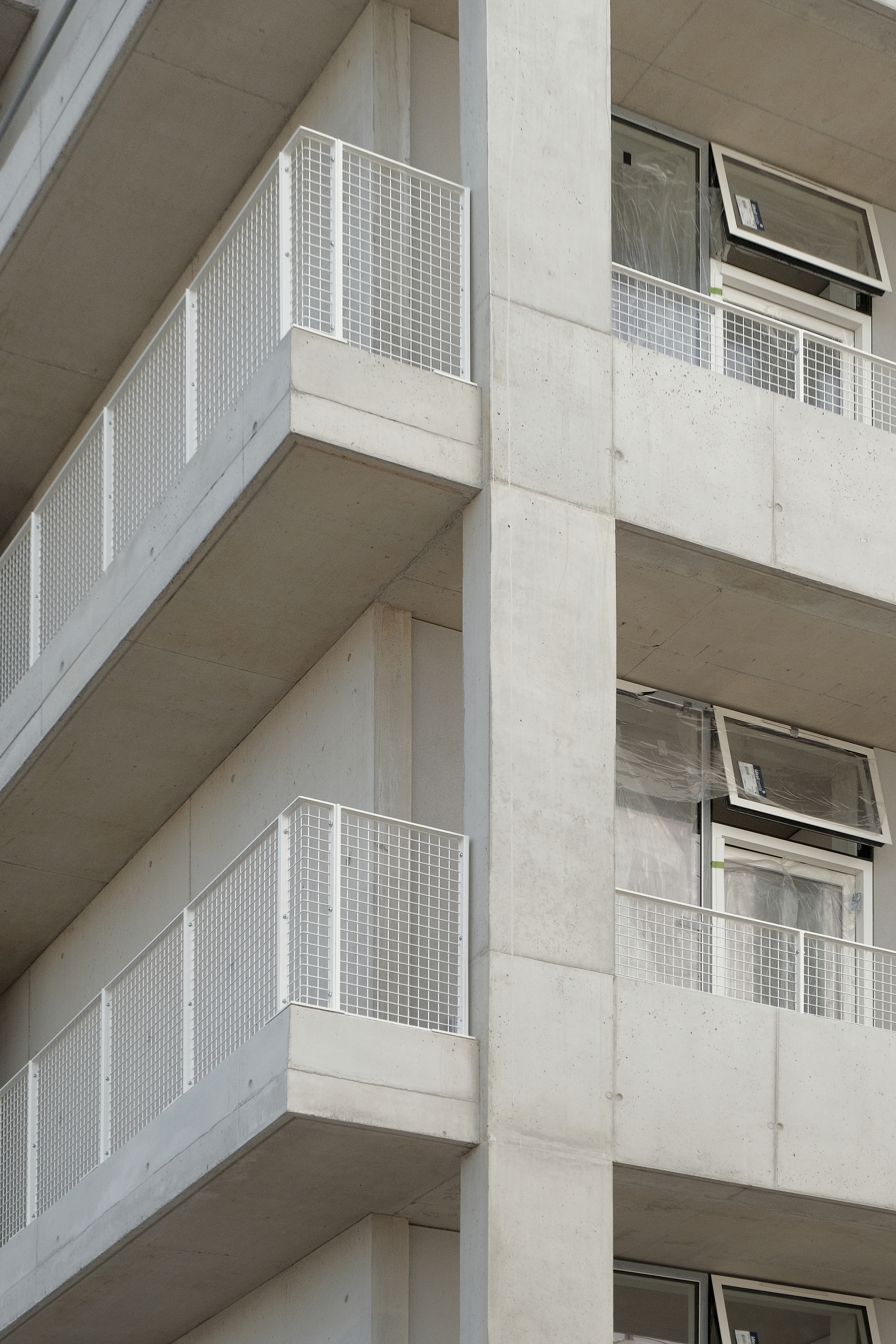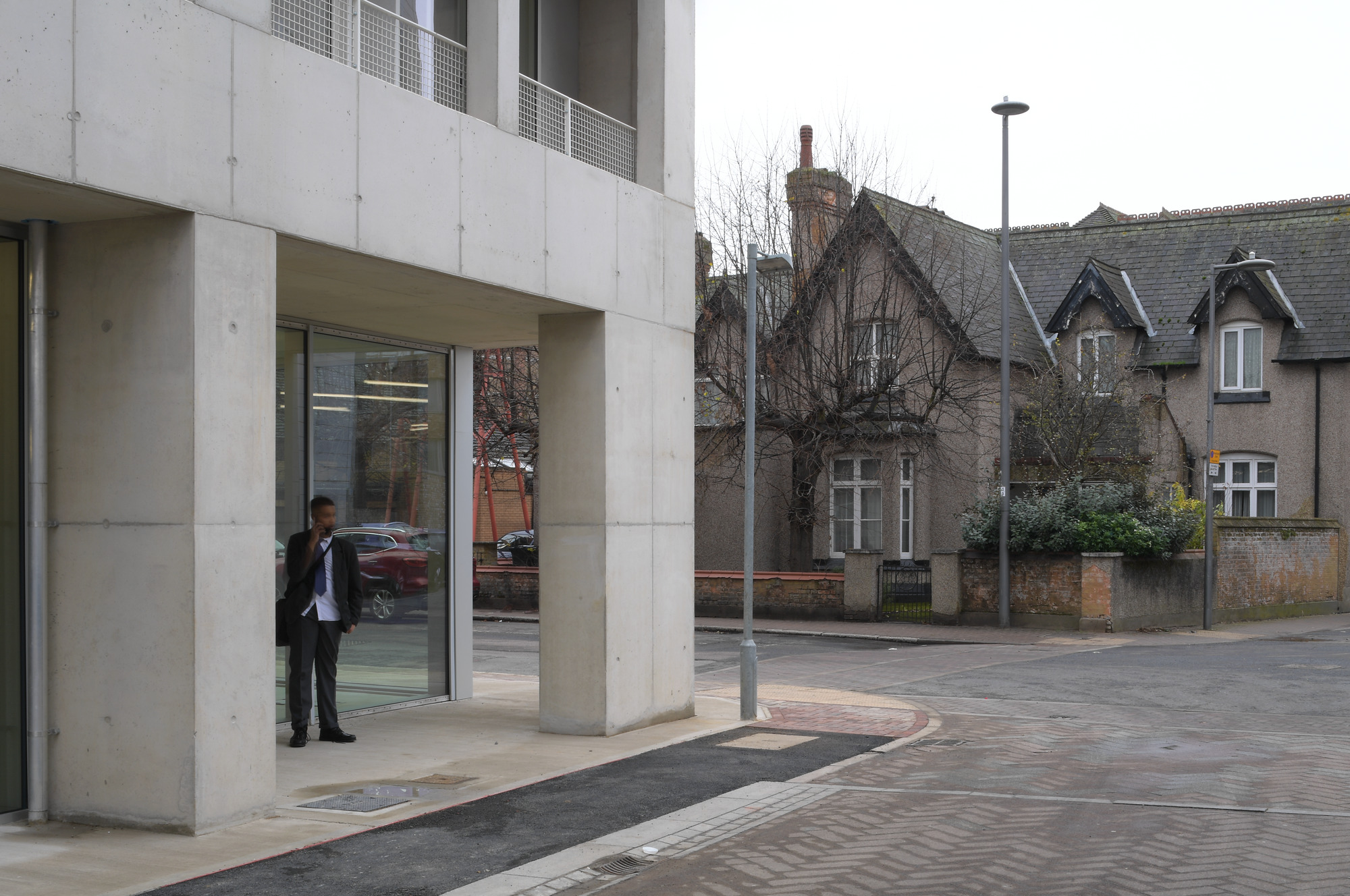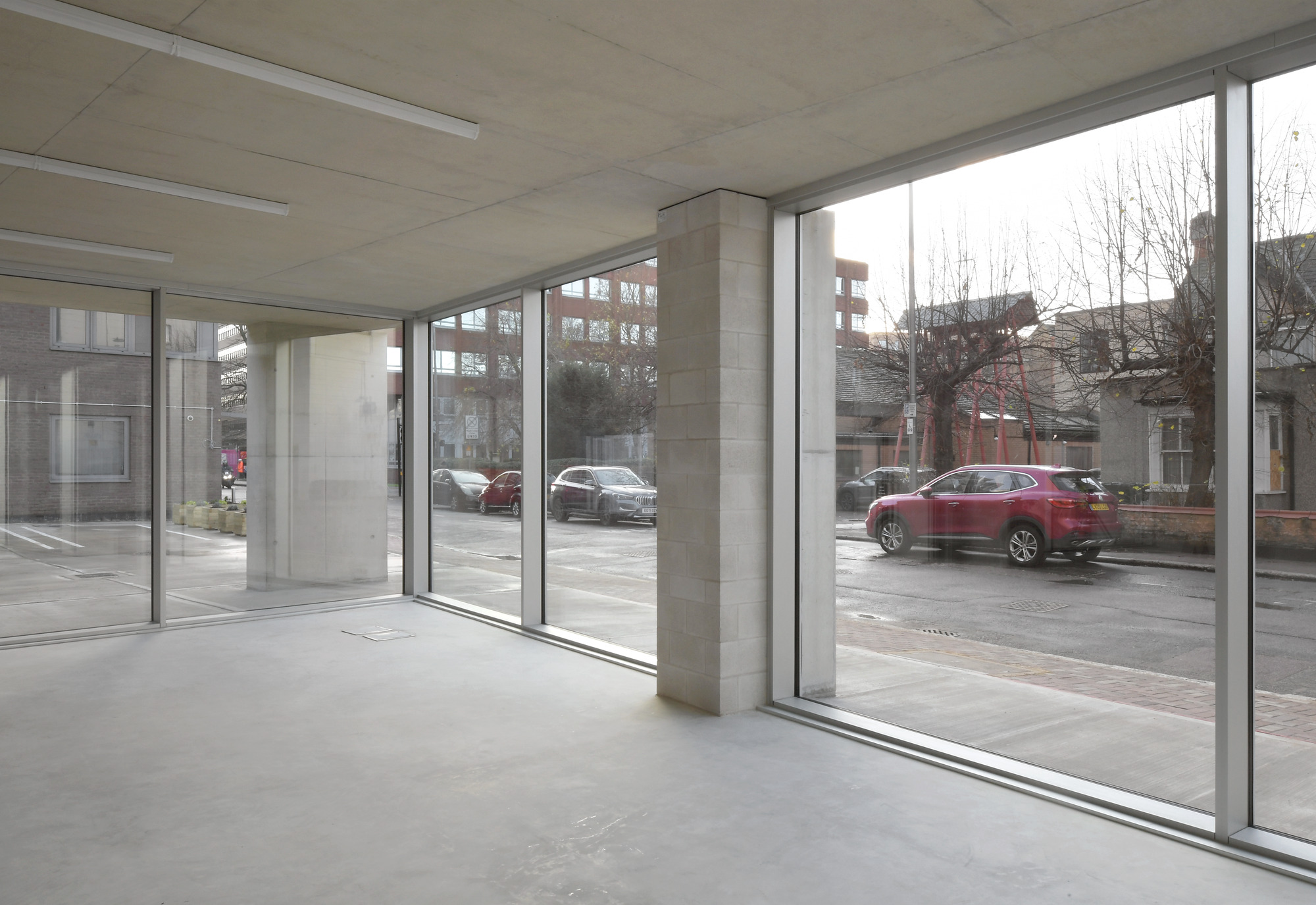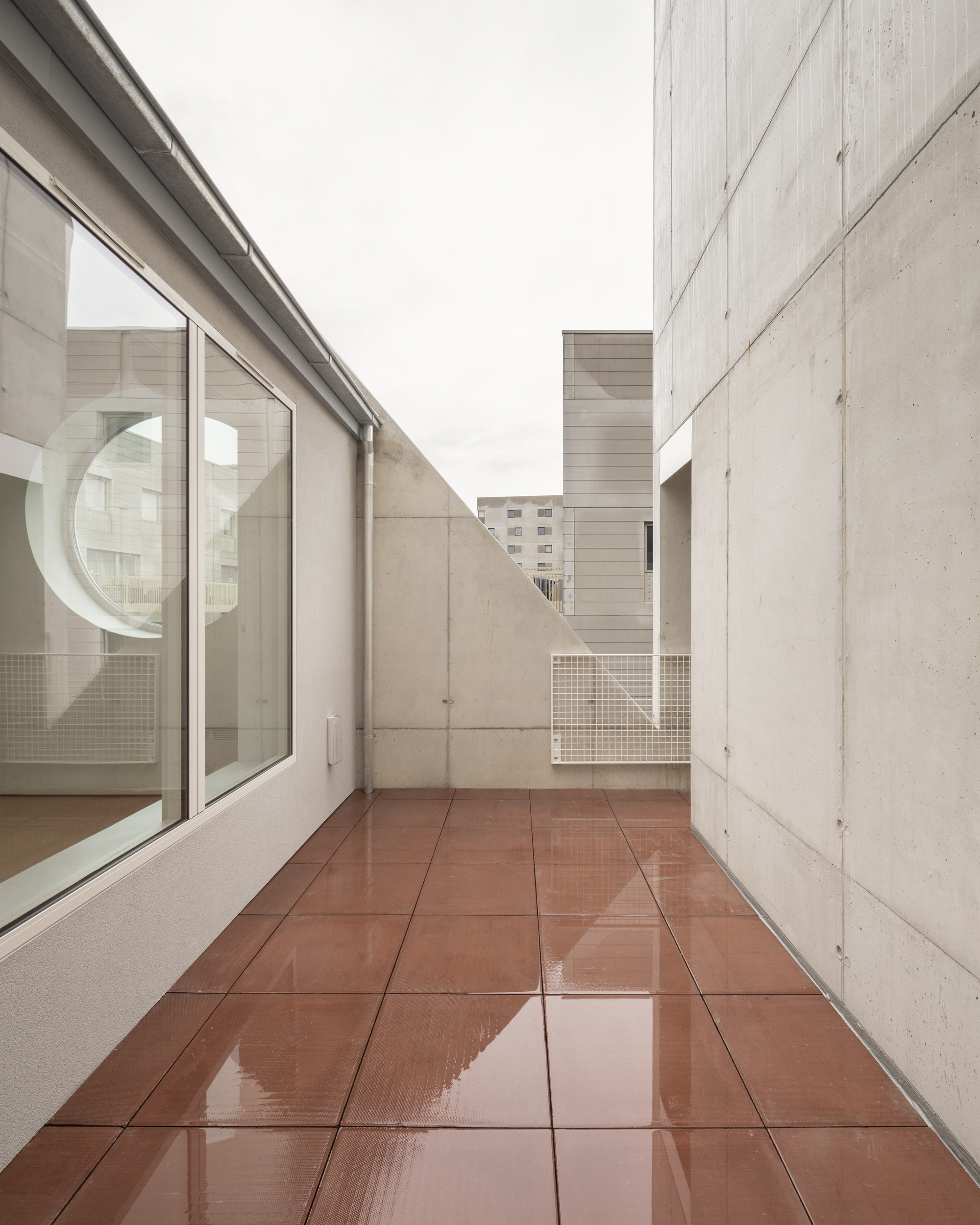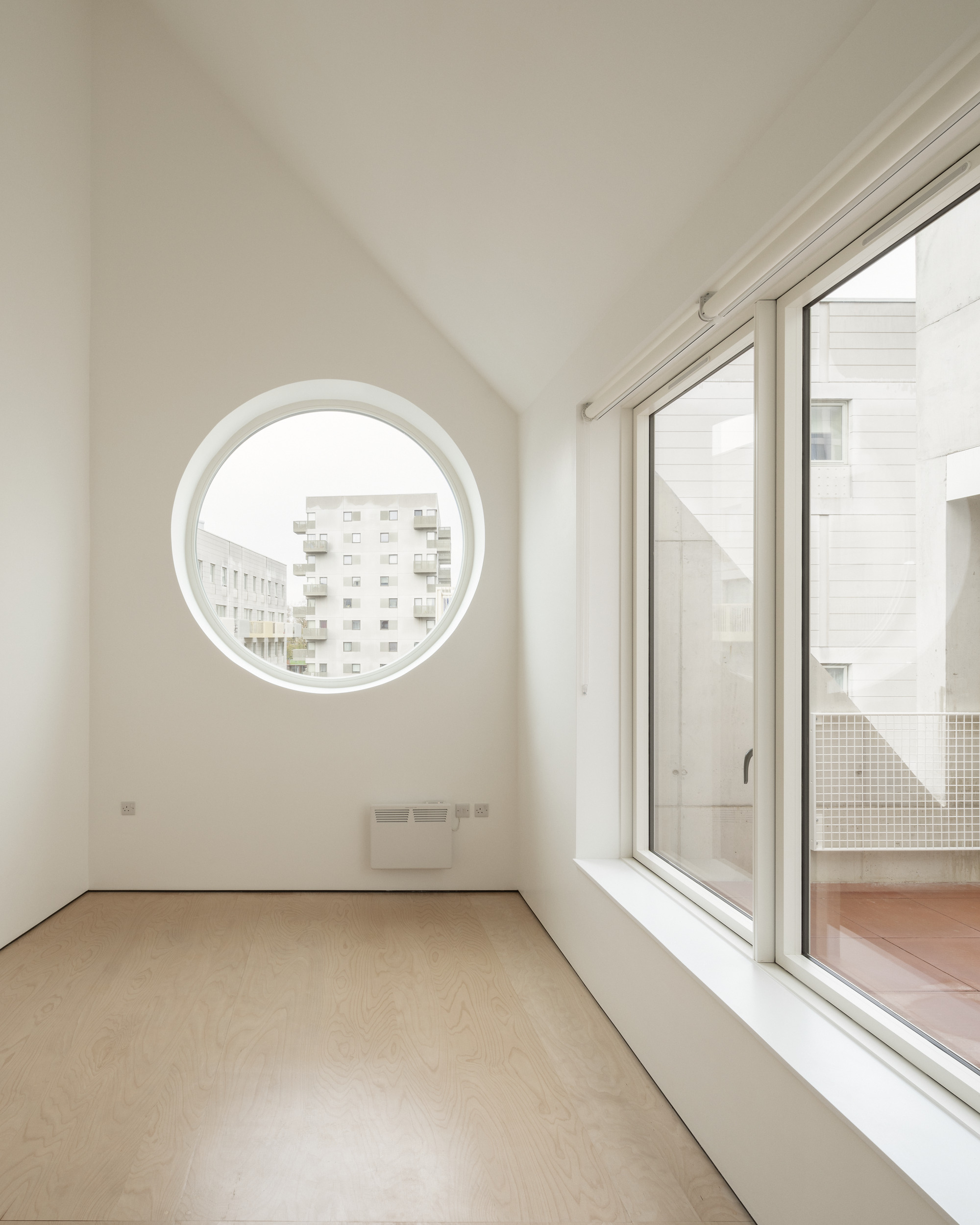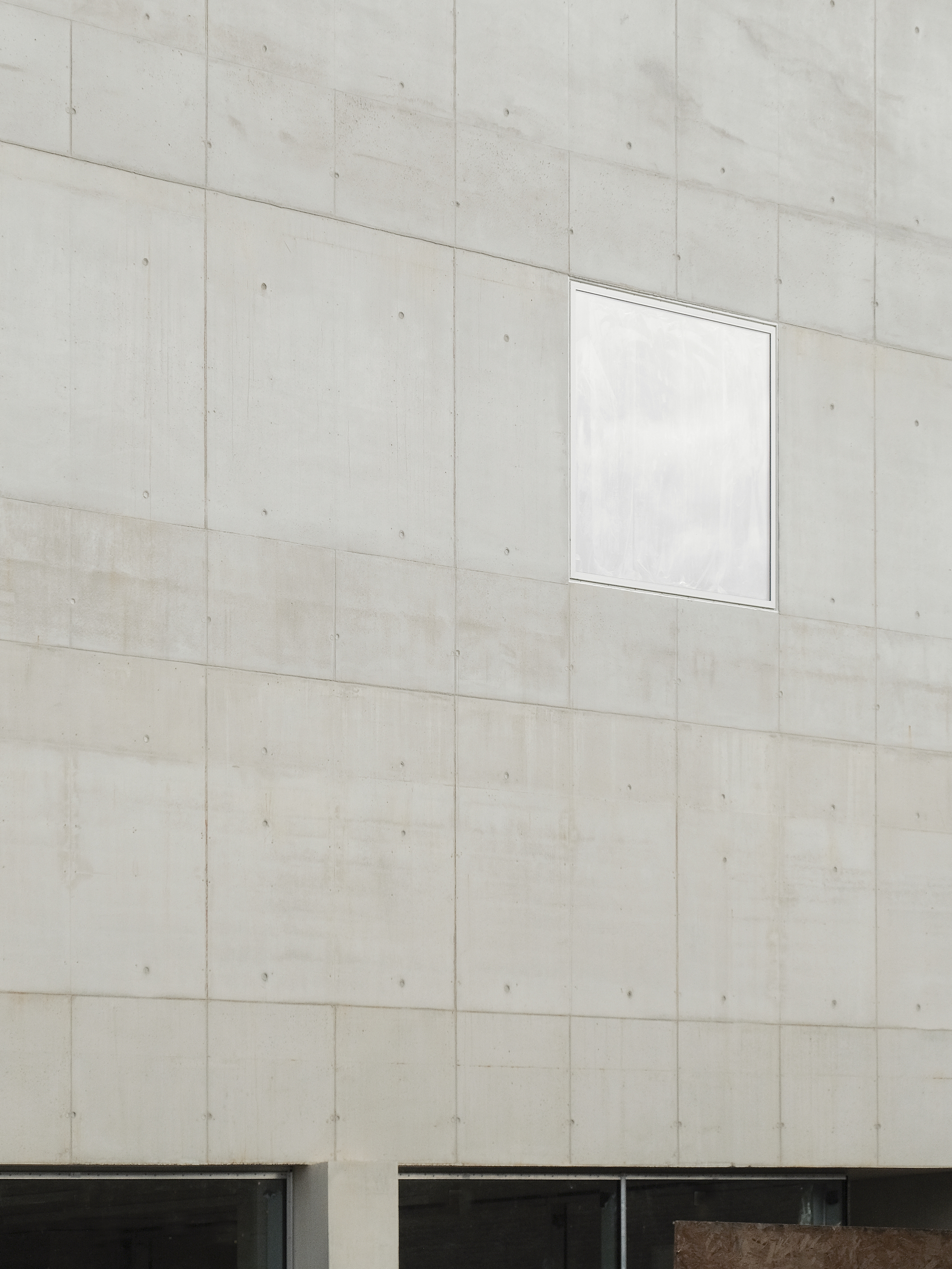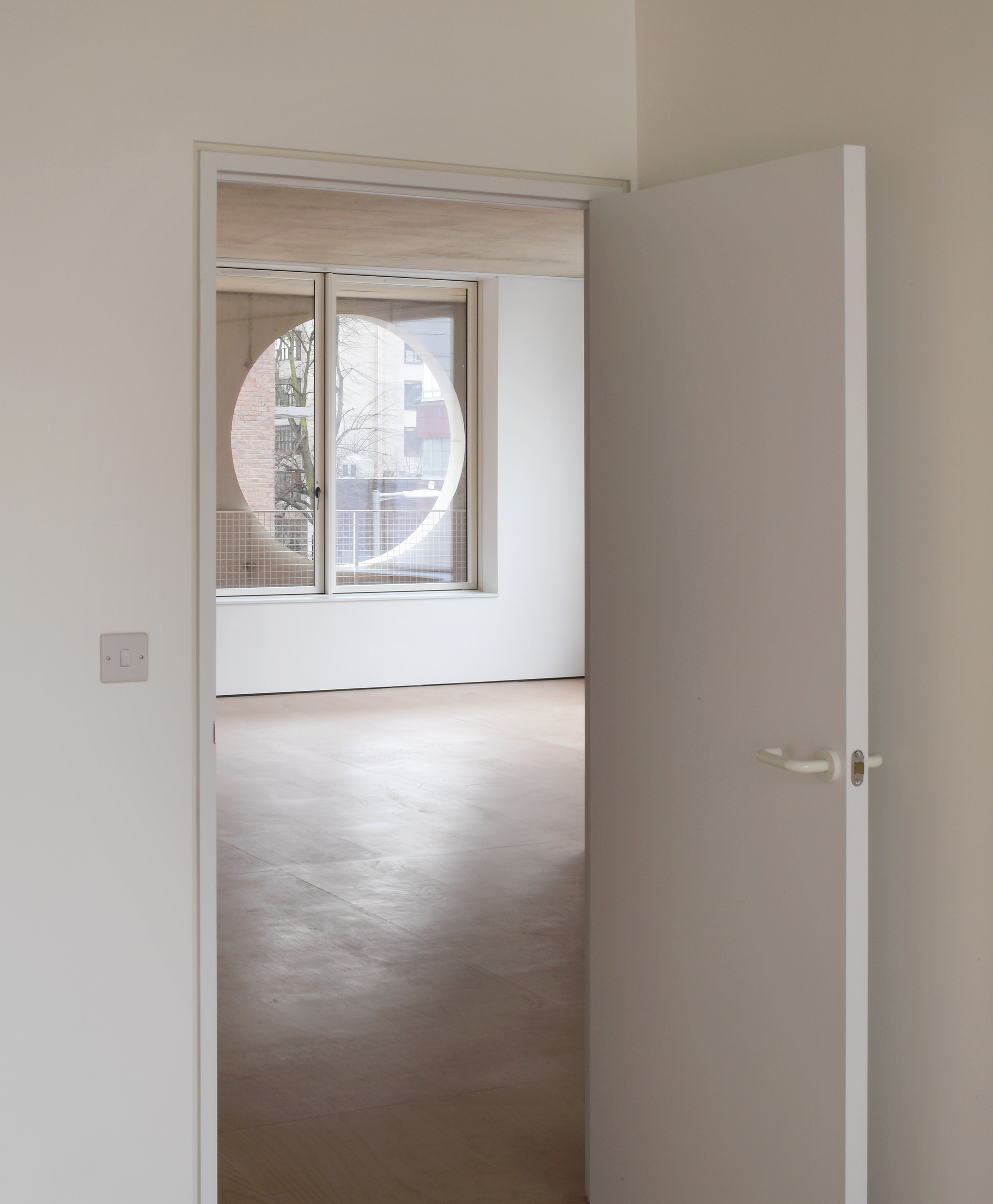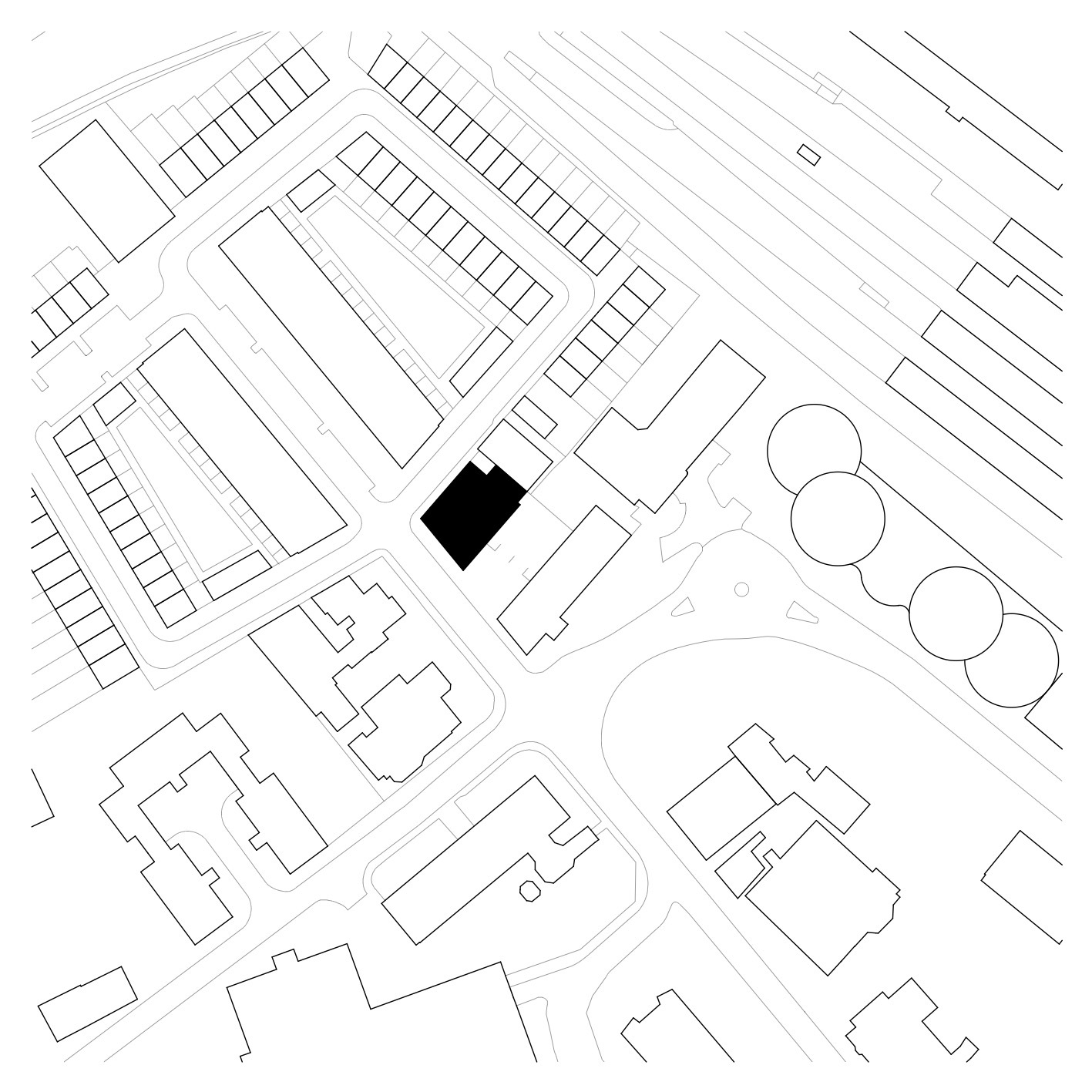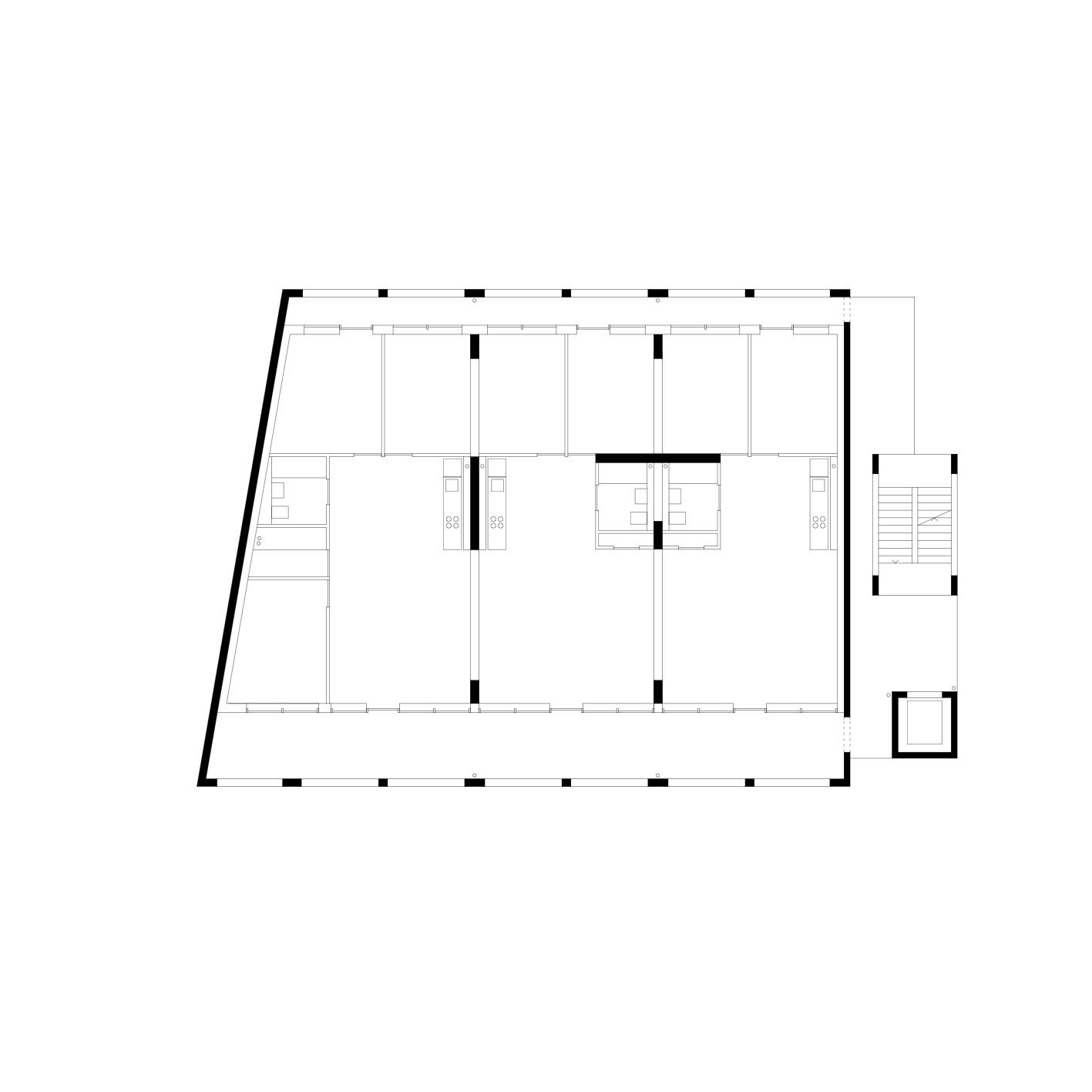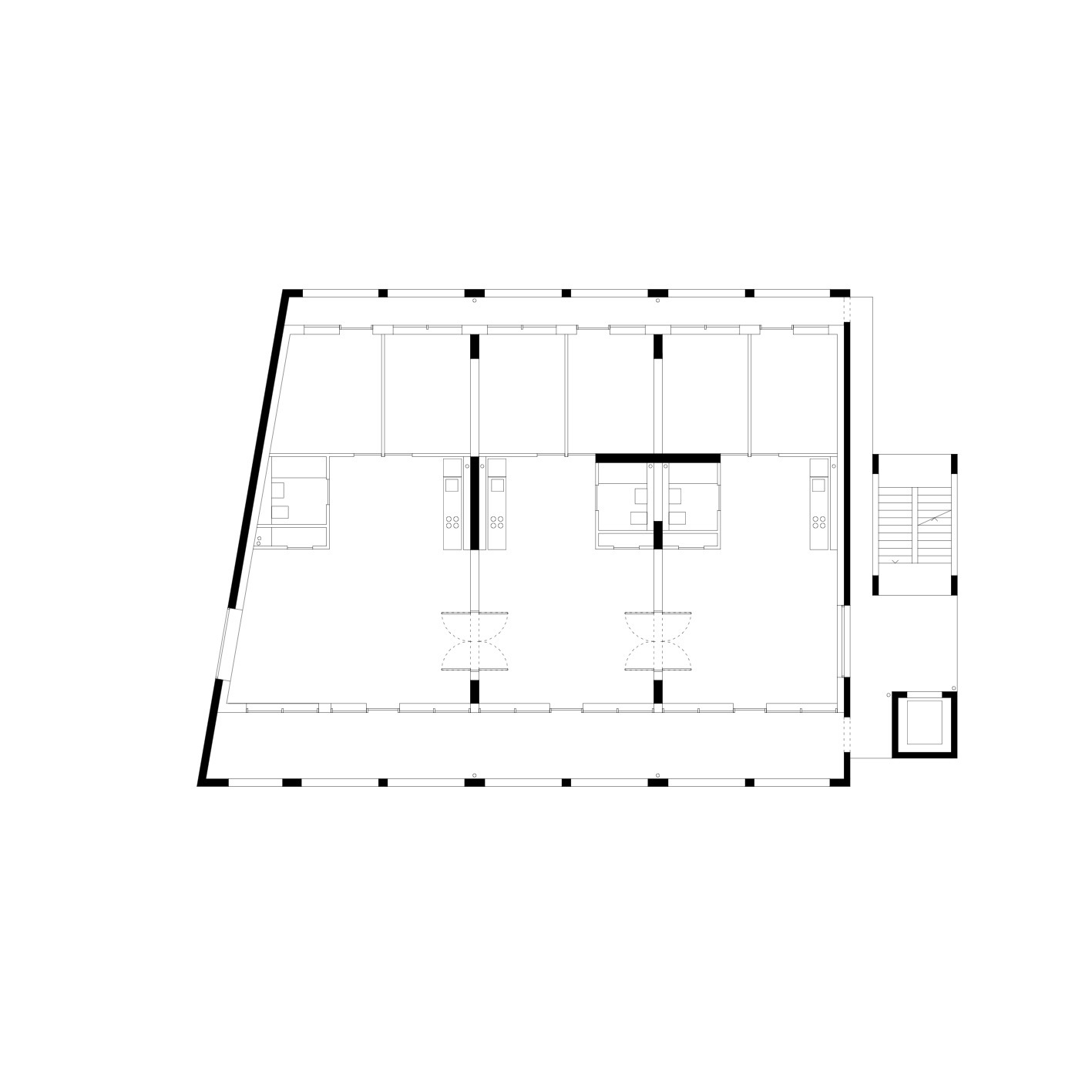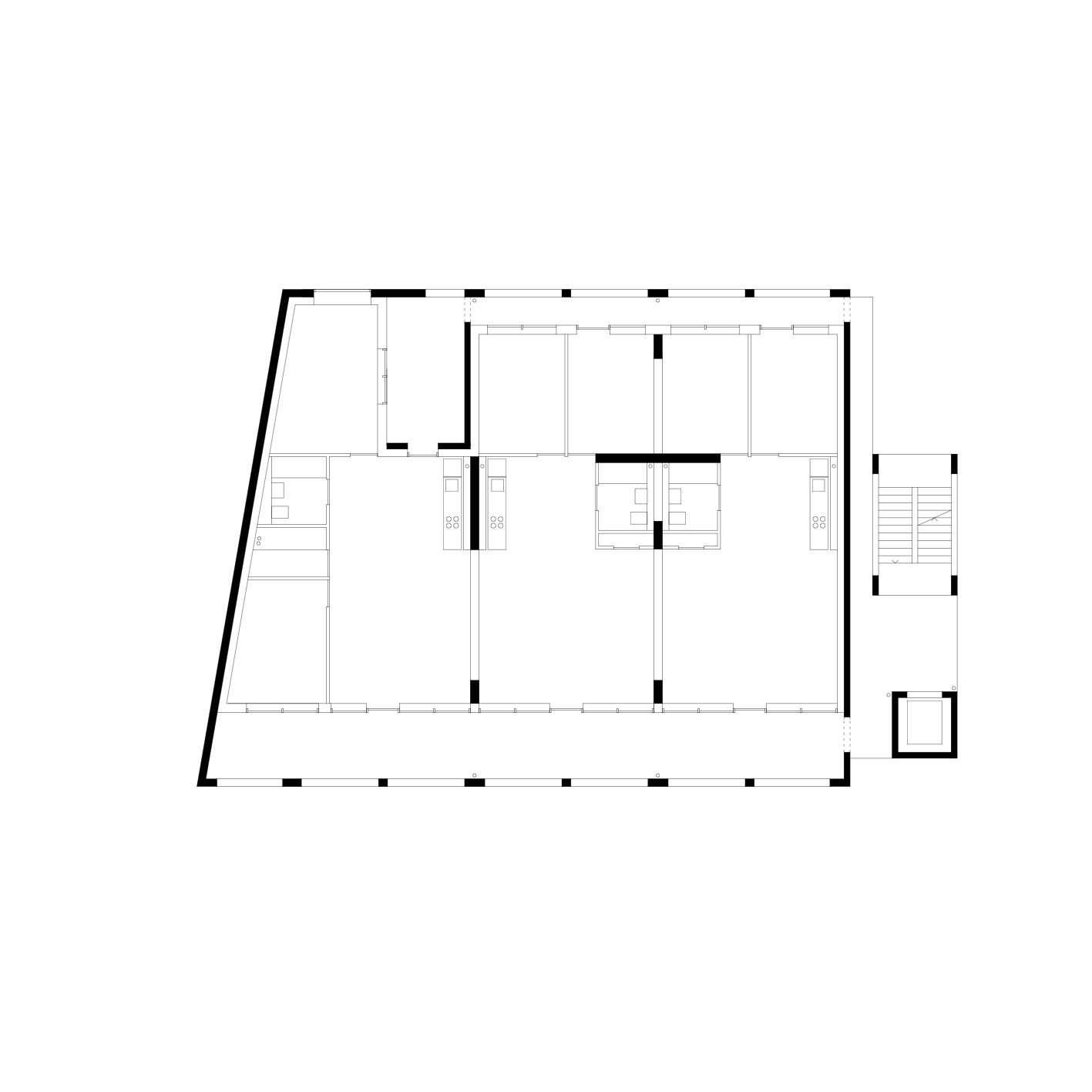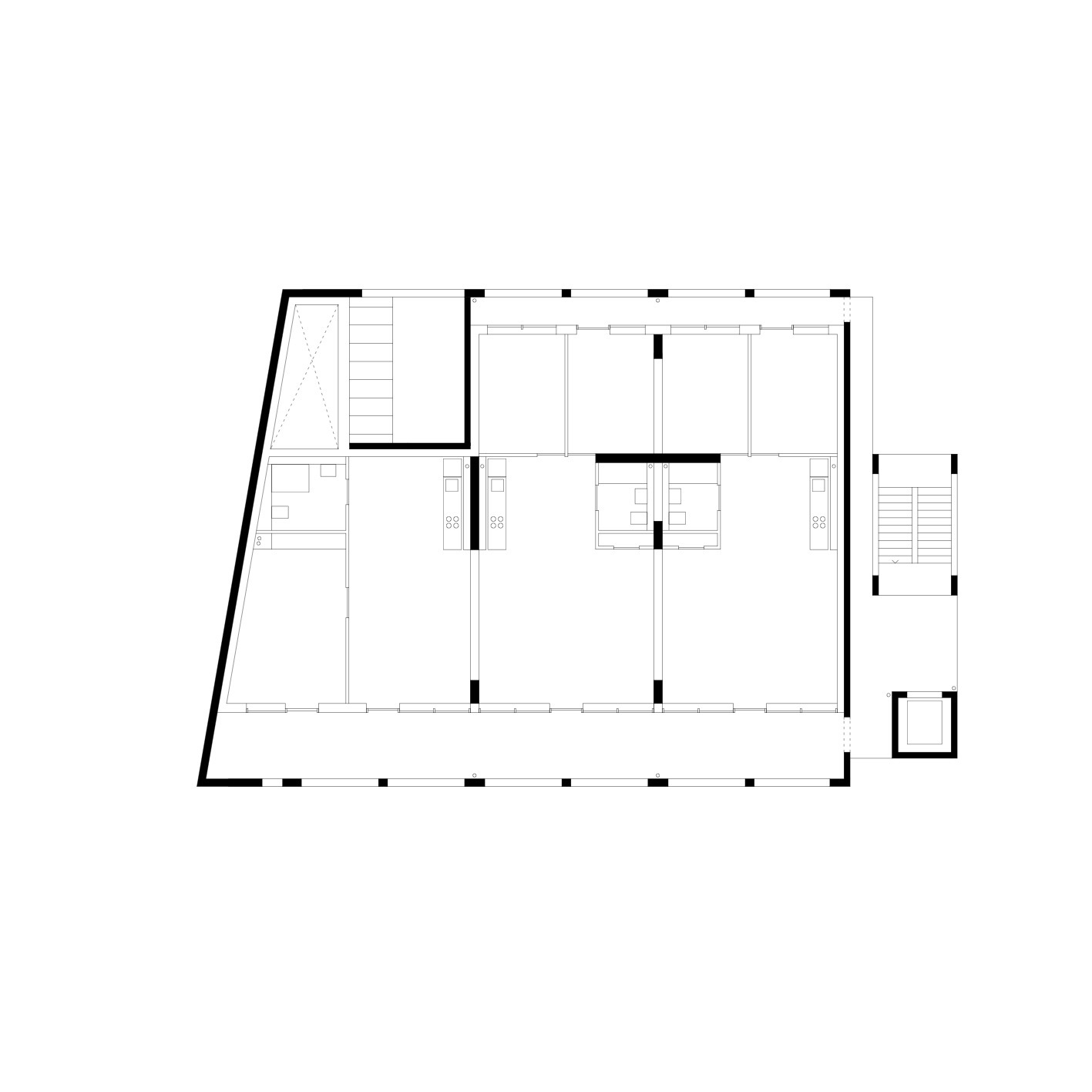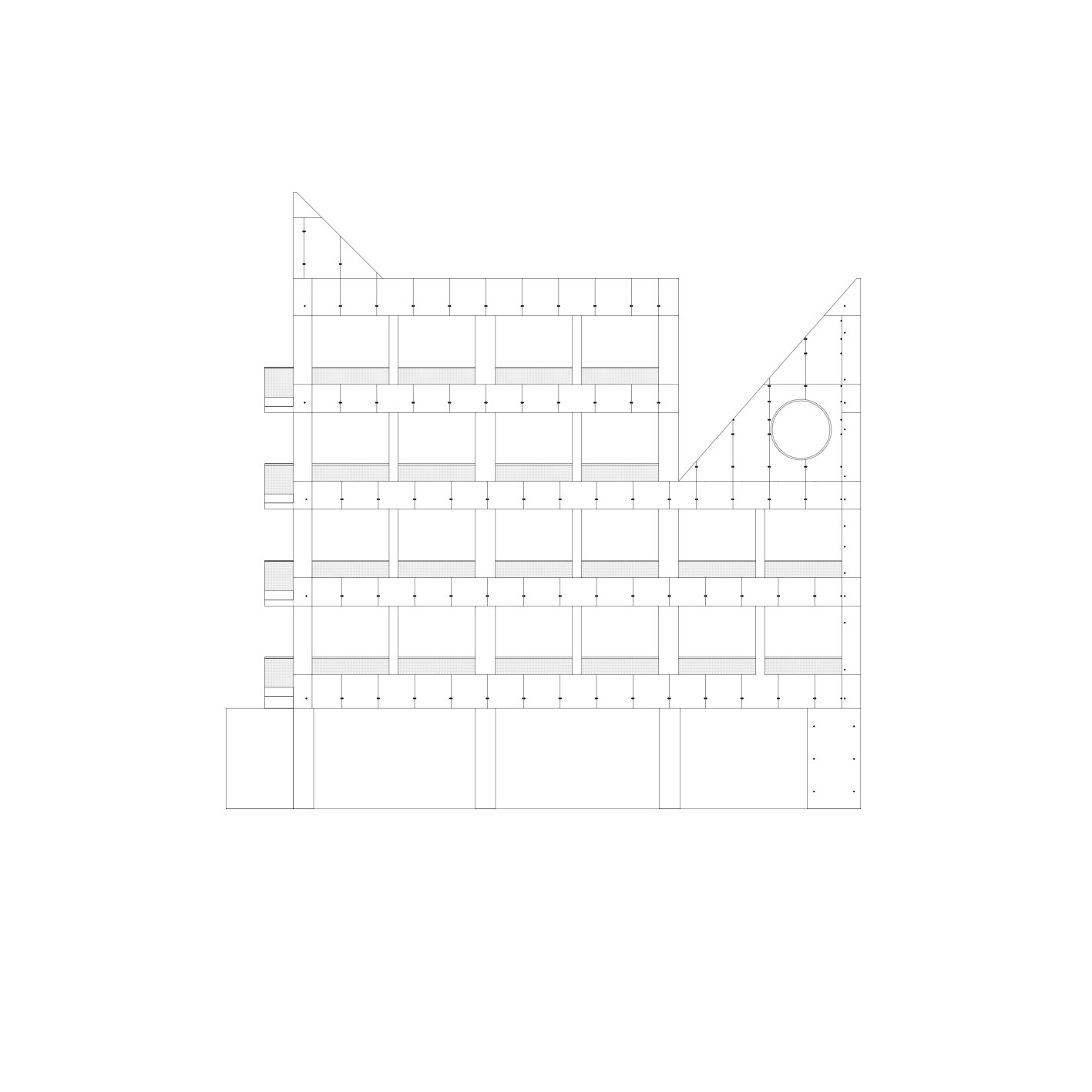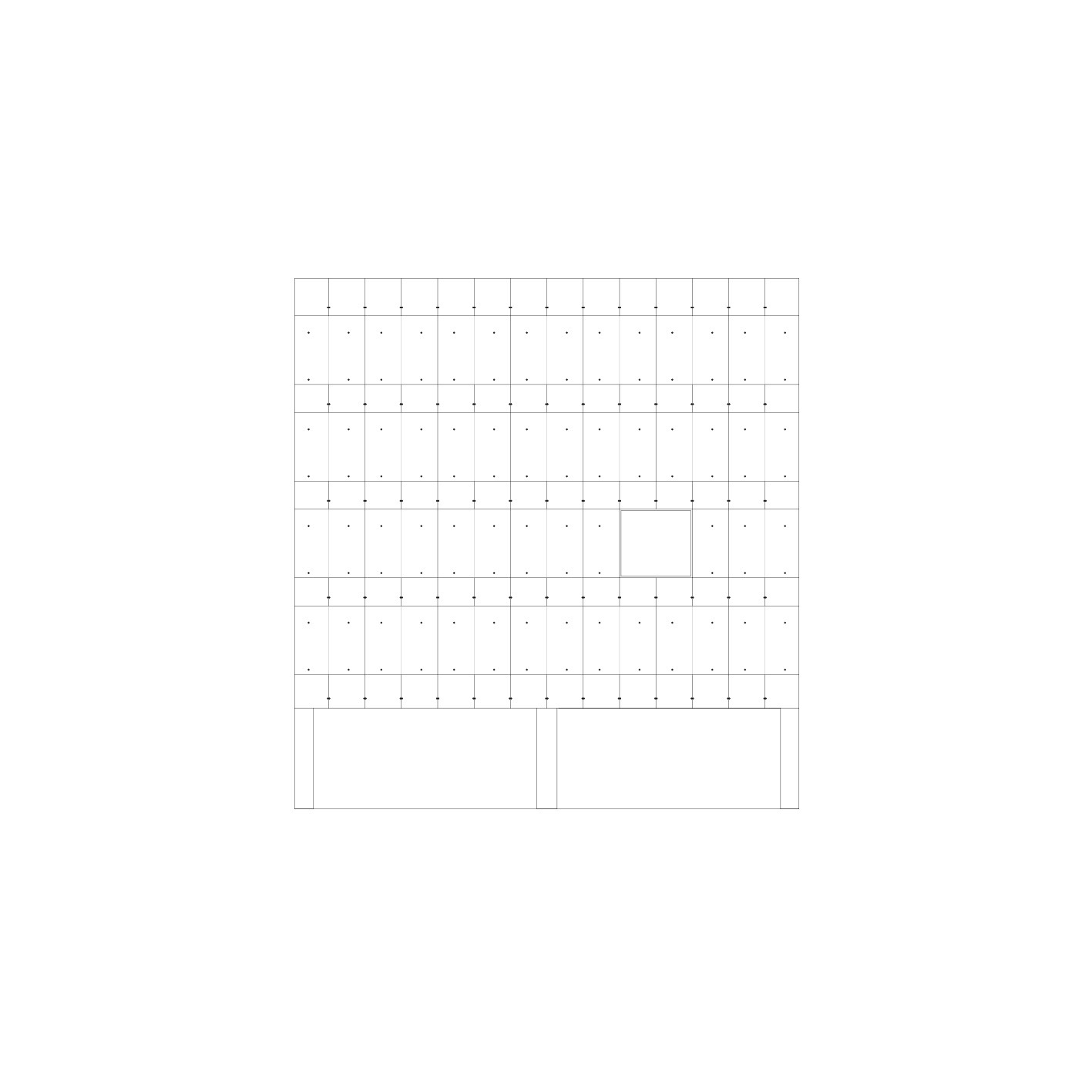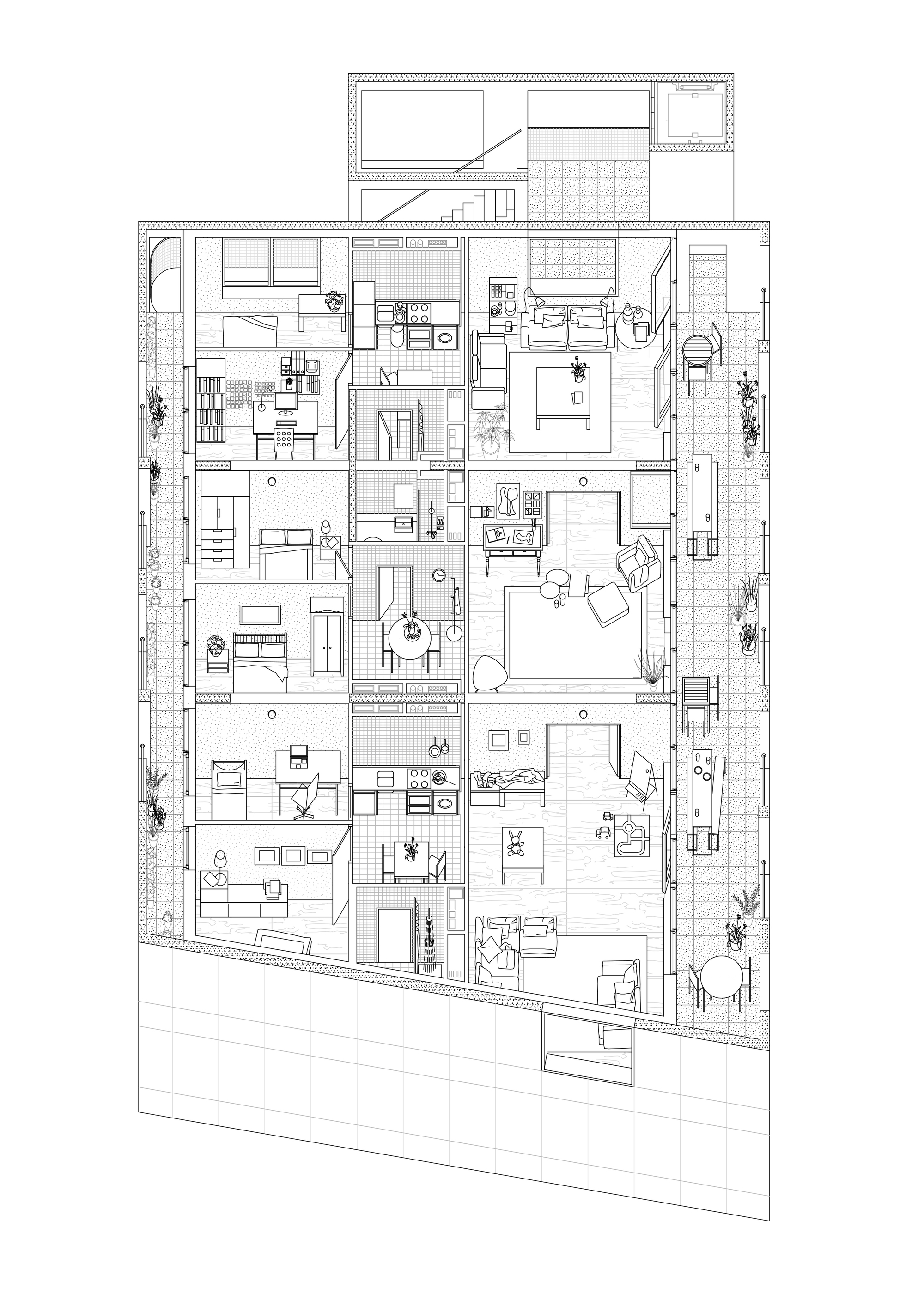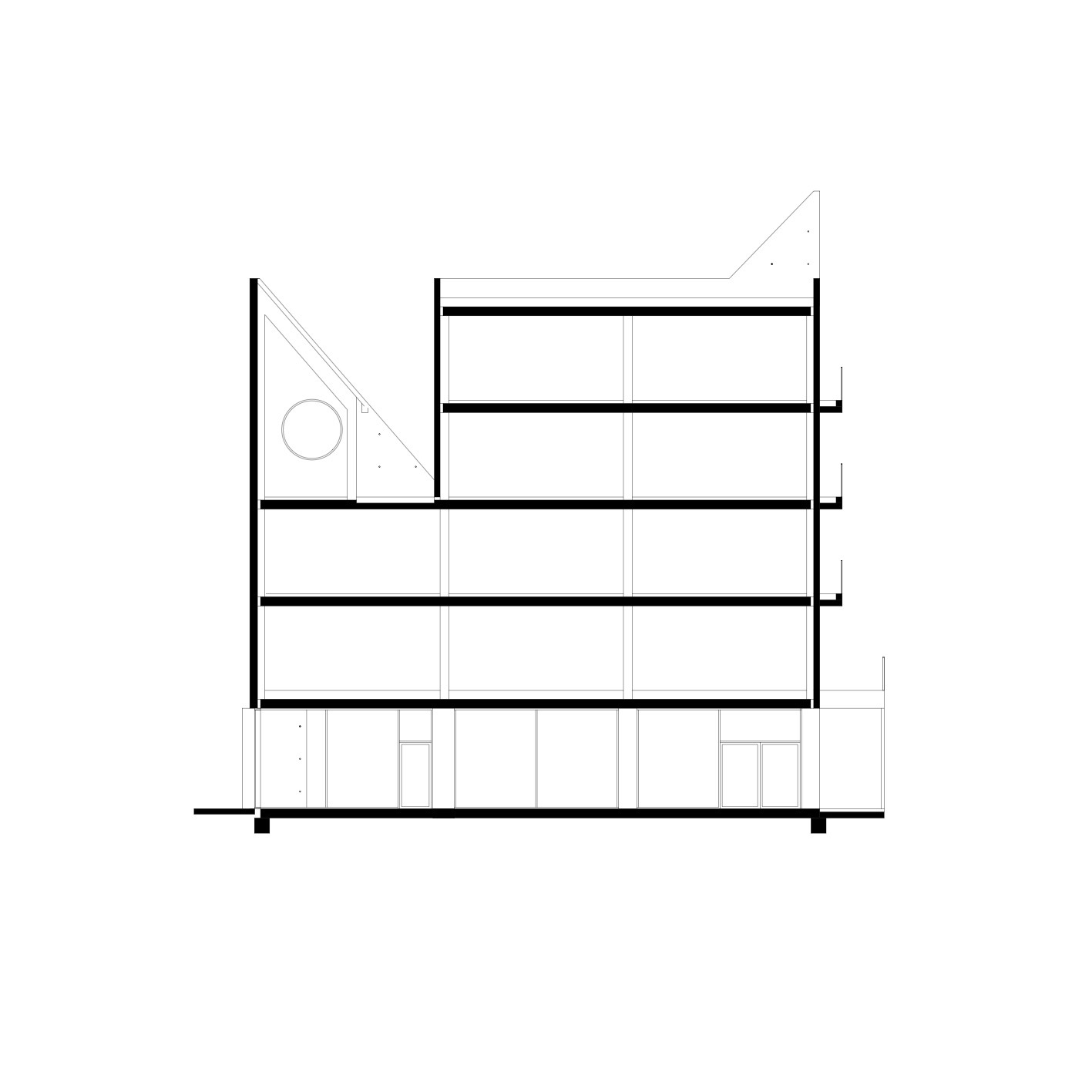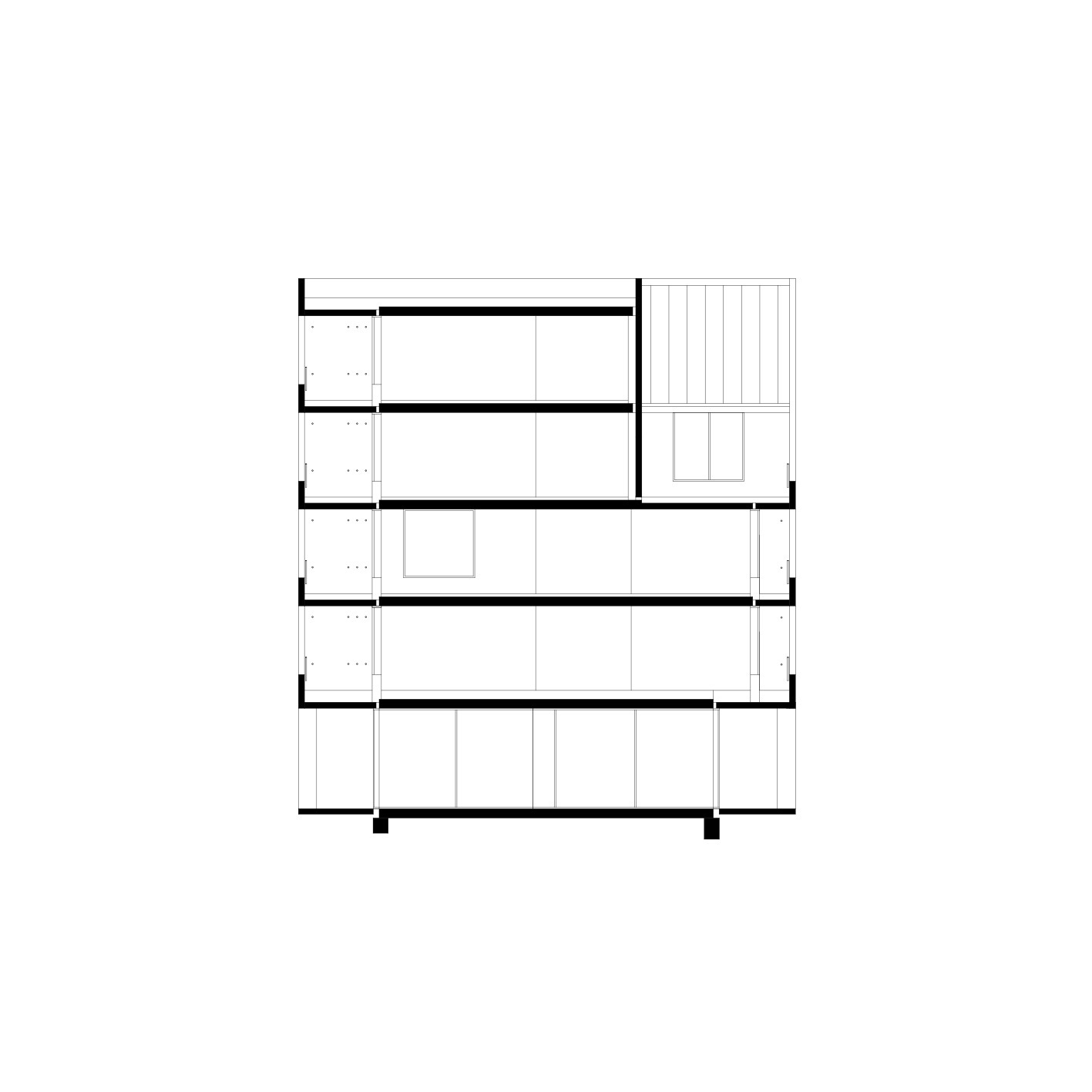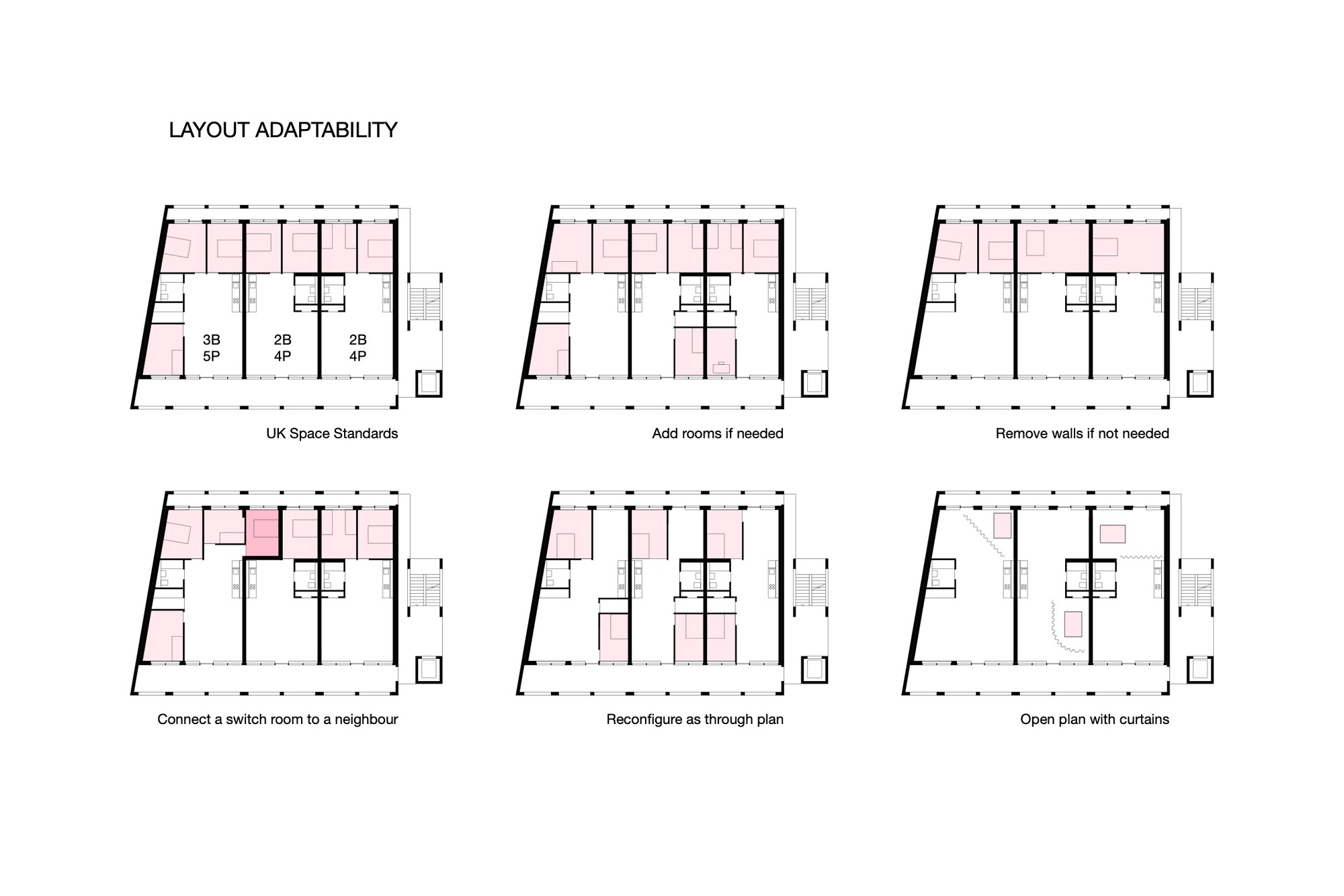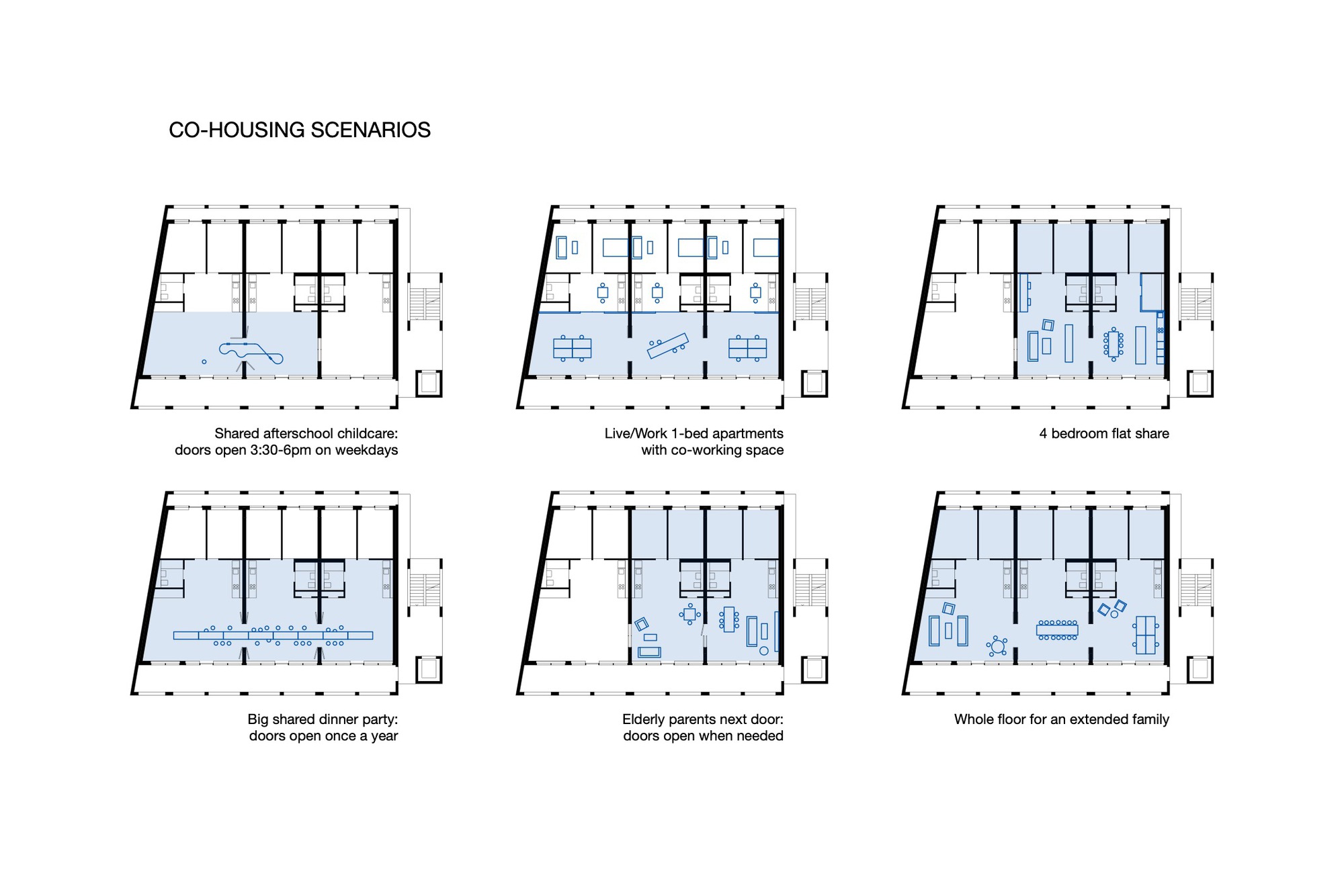Playful design. A House for Artists has a dual role as both a public and domestic building, made up from a playful tectonic of stacked shapes with clear structural legibility. A two-storey triangular form allows for variation from the standard apartment type, and better connects to the surrounding terraced housing and blocks. The upper floors provide twelve apartments, while the ground floor, set out at a larger rhythm, accommodates an ongoing public art programme.

Community. The design aims to support the forming of communities both inside the building and within the local area, through shared entrance patios and courtyard, and a street-facing public space. Resident artists can use the ground floor as work studios for their own practices as well as for the public programme, while the apartments offer co-housing possibilities. Each set of three apartments shares a communal outdoor space scaled for eating and working together, as well as access. One floor of apartments has double doors in the party walls, creating optional and flexible shared living possibilities, such as parties, childcare, or co-working.
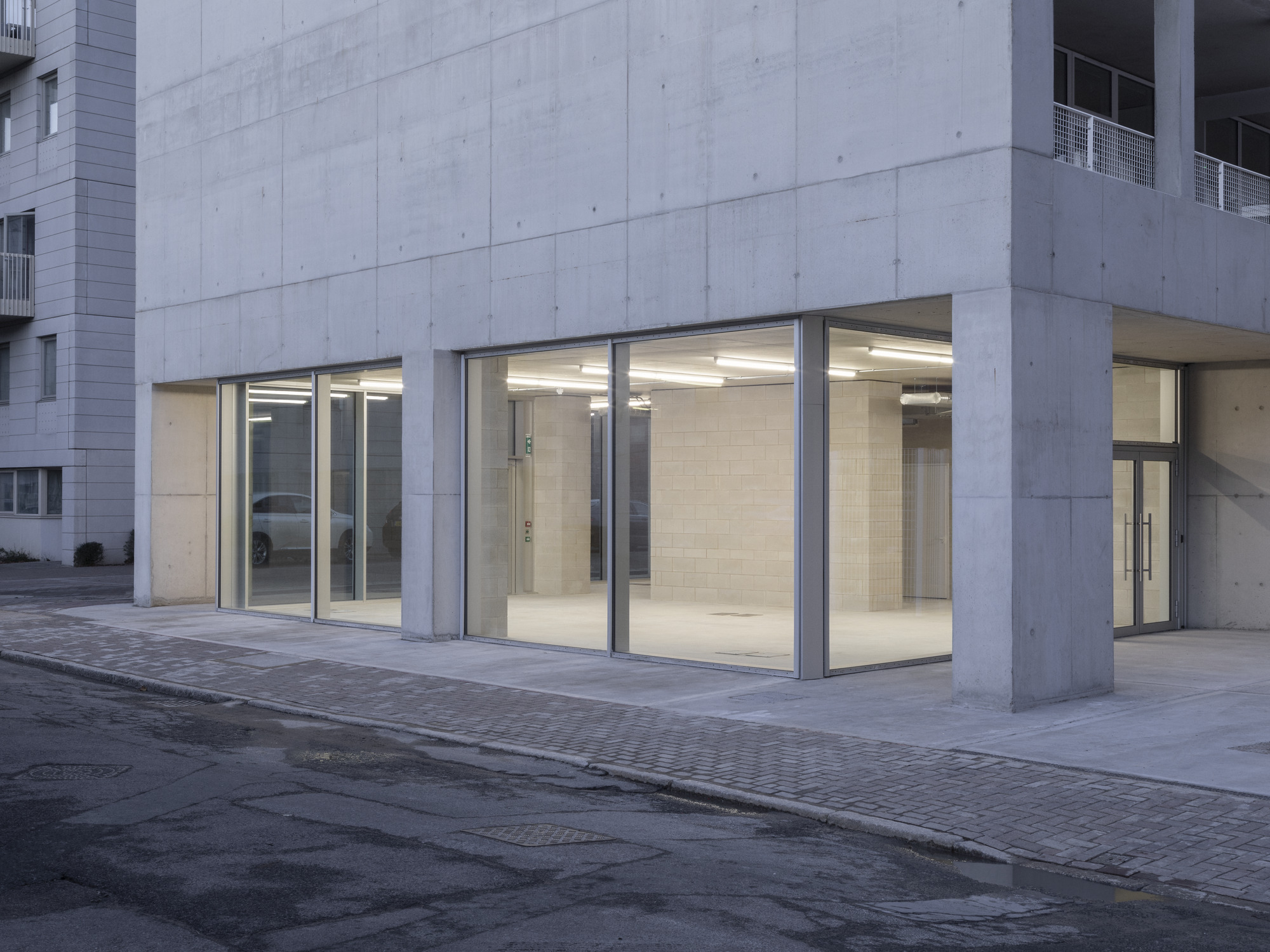
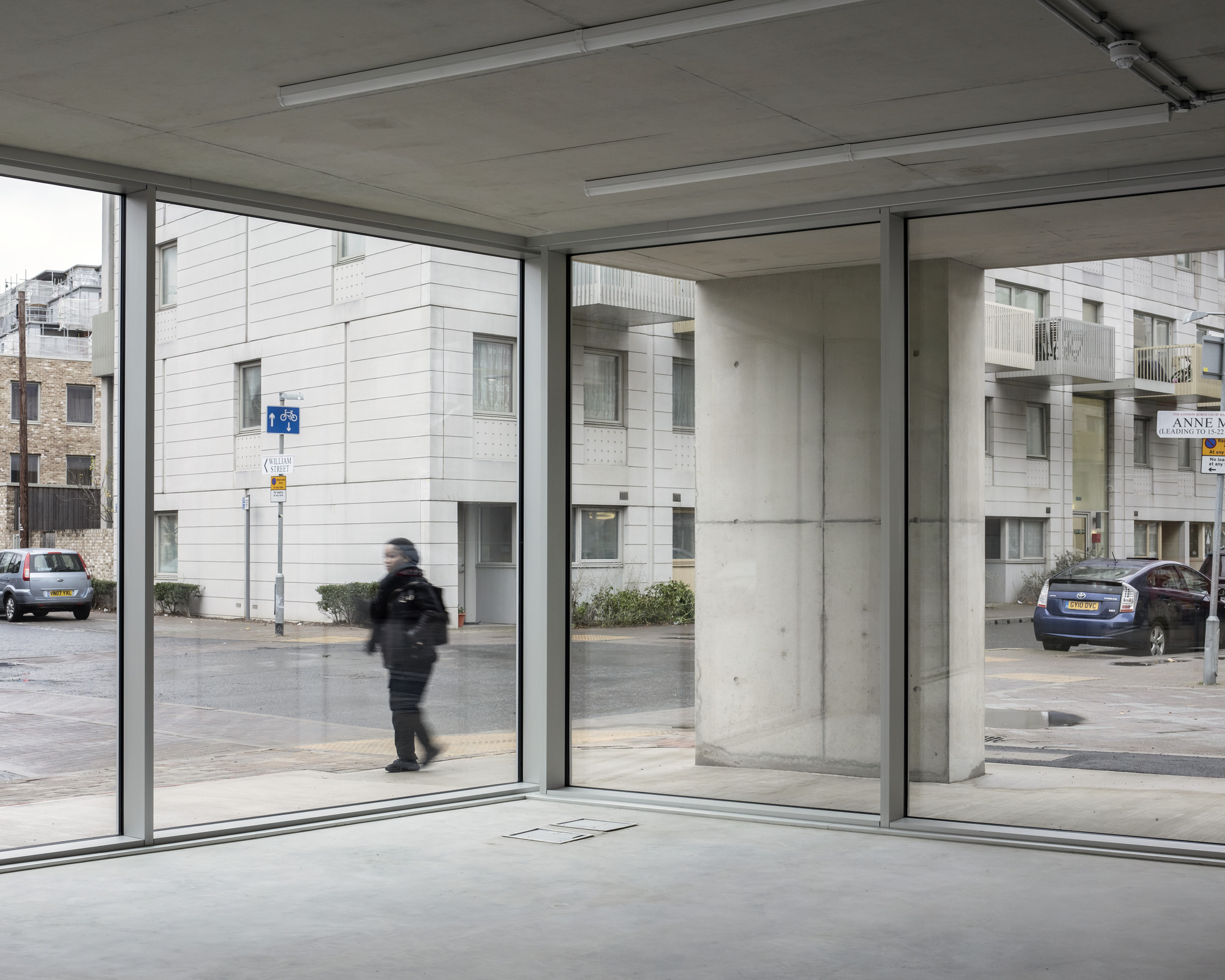
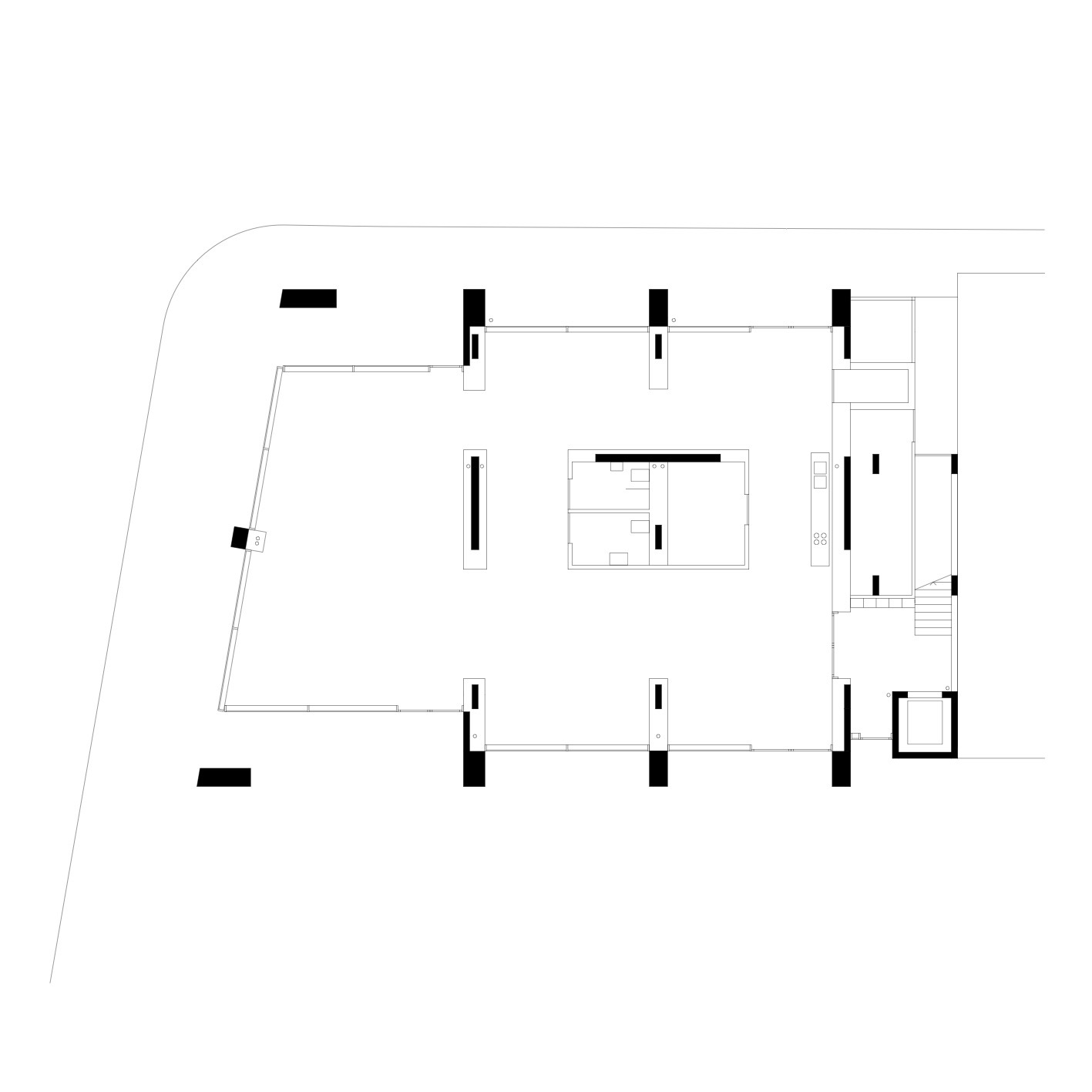
Adaptability and flexibility. APPARATA’s housing model provides adaptability, robustness, and generous floor-to-ceiling heights in the tradition of open industrial units rather than the corridor-based flat. While flats in the UK are typically restricted in their layout due to one-way escape routes via corridors that cannot be altered, A House For Artists provides a robust two-sided open-air escape strategy, eliminating the need for corridors and freeing up floor plans for modification. Residents are invited to add to and adapt their apartments during their tenancy, removing or adding walls to meet their needs. Raw material finishes provide structural clarity and mean residents can easily read what can be built where.
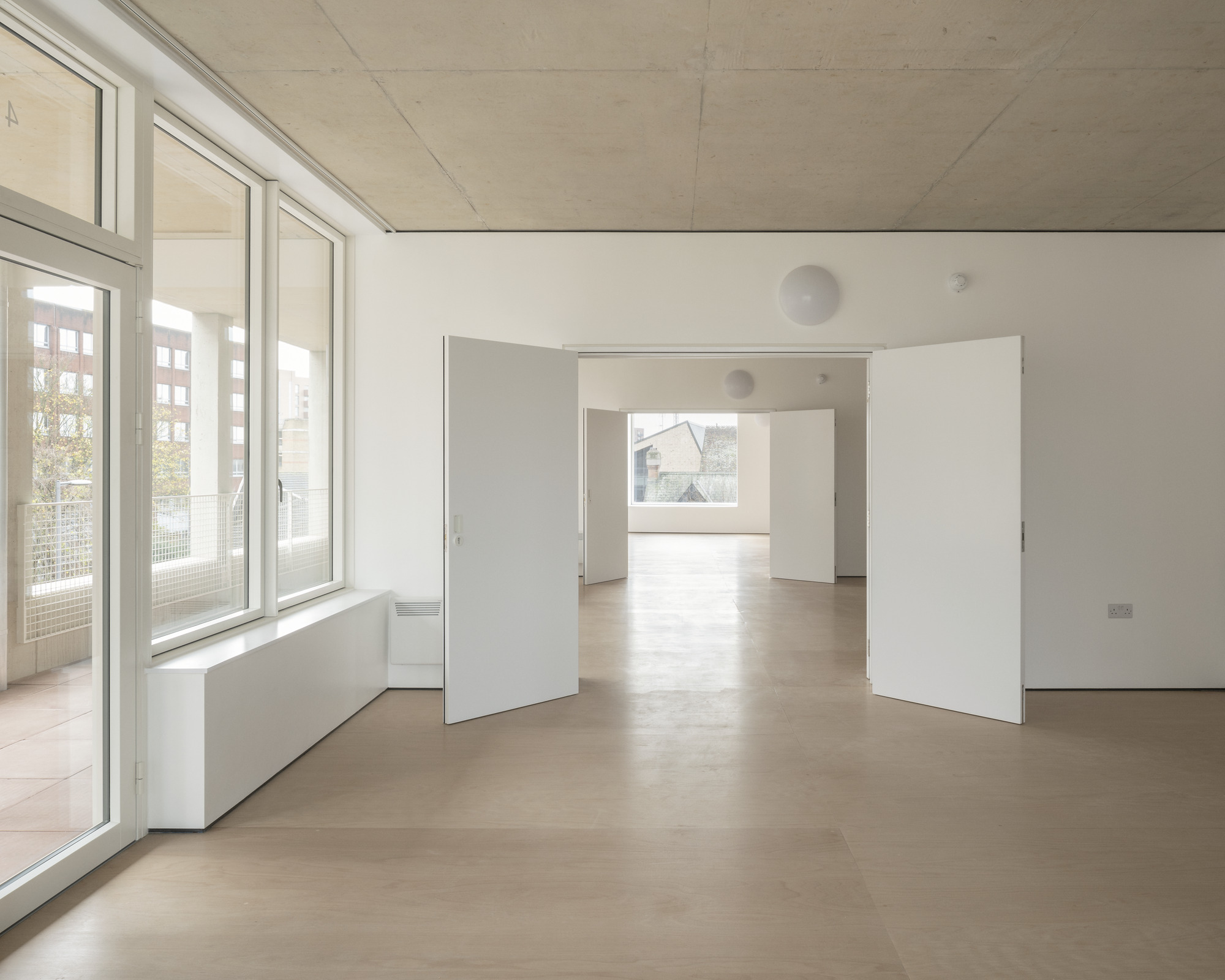

Sustainability. The building is constructed using a single skin of 50% GGBS concrete, whereby half the cement is substituted with a by-product of the steel industry, and other material build-ups are lean. The formwork was made using standard reusable parts and left unlined, reducing waste on site. Exposed ceilings provide thermal mass to reduce overheating, while covered walkways reduce the solar gain at the hottest time of day. Dual aspect openings allow natural cross-ventilation, and hot water is provided through a communal Air Source Heat Pump. The building has over 20% less embodied carbon than the RIBA 2030 climate challenge target and GLA aspirational target.
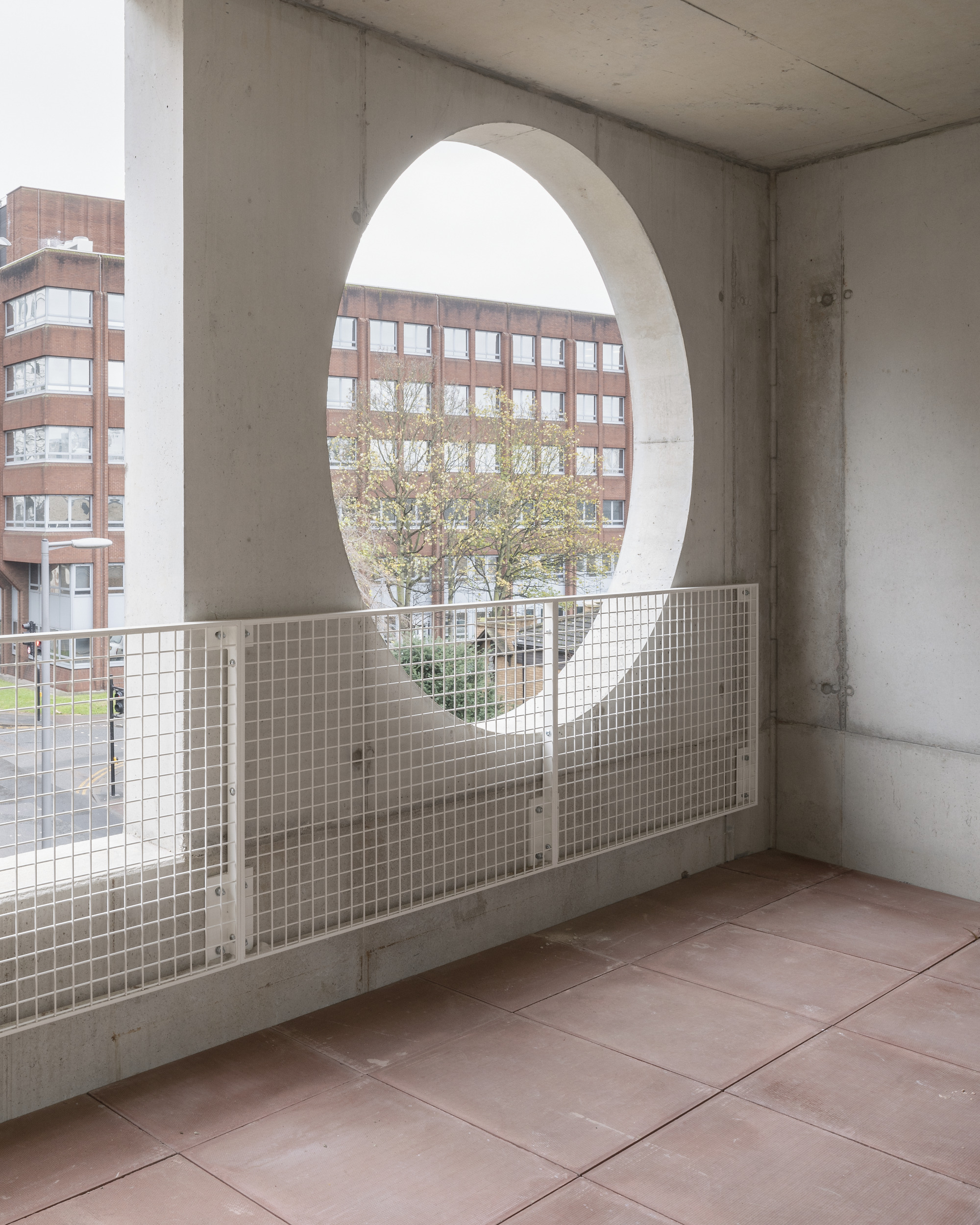
▼项目更多图片
